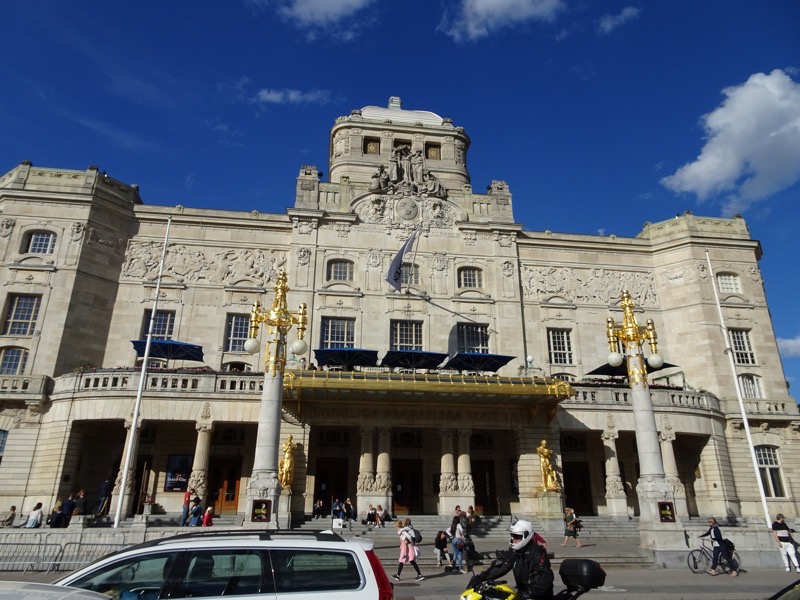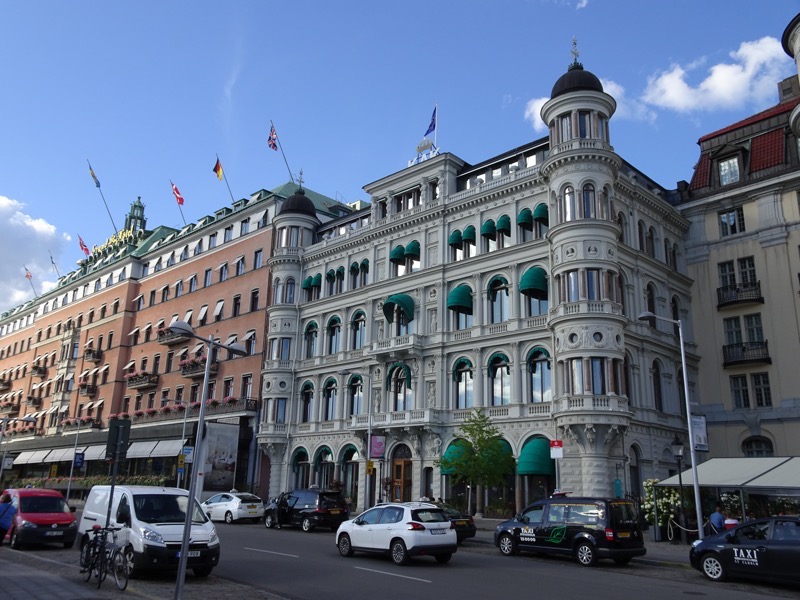The conference has started, and I was only required for the key note addresses this morning, so I had the rest of the day to explore… and what a gorgeous day it was, Stockholm! Seriously impressed at the lovely cool sunny weather, so much so, I decided to walk to the Djurgården this morning instead of taking the train or a bus to see a bit of the town on the way. The Djurgården area is the location of many of Stockholm’s museums, including a ‘bucket list’ item for me – the famous Vasa Museum. The stroll along the city’s waterfront was really beautiful and the architecture here is amazing.
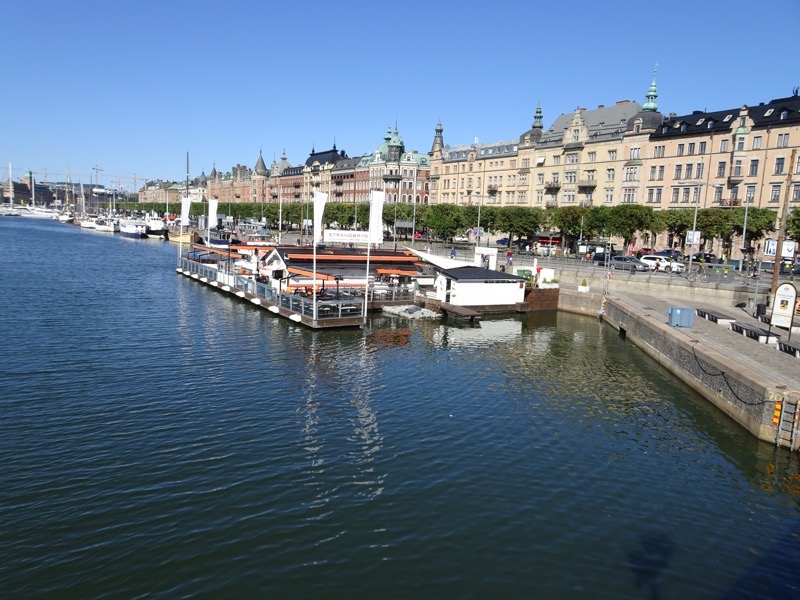
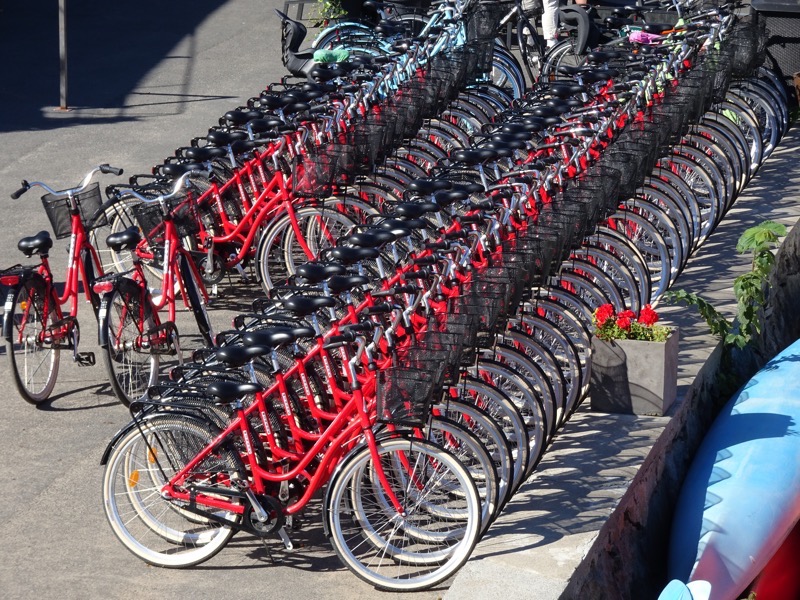 The Vasa Museet! I stopped in because I simply couldn’t help myself, but I am not going to write about it yet – as part of our conference, we are having a private after-hours tour of the Vasa with the Director of the museum, followed by a formal conference dinner, which is also being held here on Wednesday night. As such, I am likely to gain more information that I will want to include – so I’m going to put it all in a later post.
The Vasa Museet! I stopped in because I simply couldn’t help myself, but I am not going to write about it yet – as part of our conference, we are having a private after-hours tour of the Vasa with the Director of the museum, followed by a formal conference dinner, which is also being held here on Wednesday night. As such, I am likely to gain more information that I will want to include – so I’m going to put it all in a later post.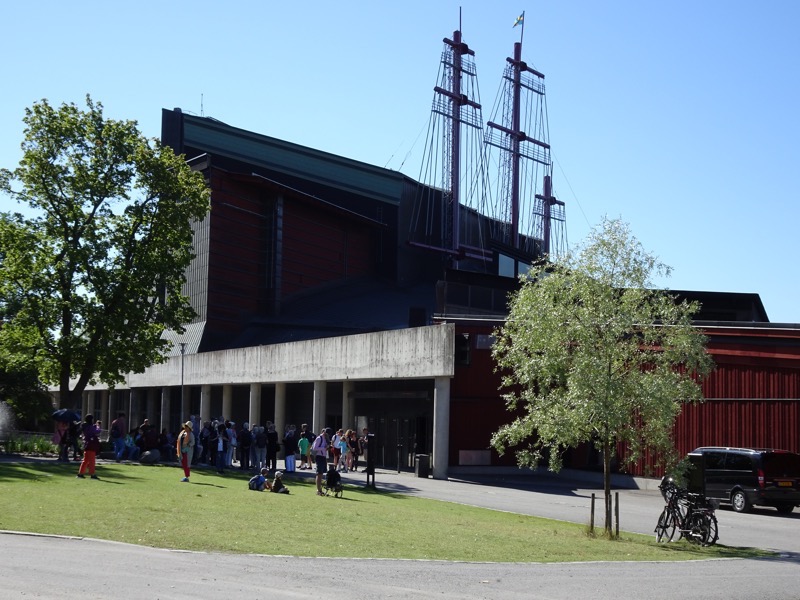 Here is a sneak preview couple of photos though – it is just as impressive as I had imagined, and such an amazing facility to display the warship in. Much, much more to follow in a couple of days.
Here is a sneak preview couple of photos though – it is just as impressive as I had imagined, and such an amazing facility to display the warship in. Much, much more to follow in a couple of days.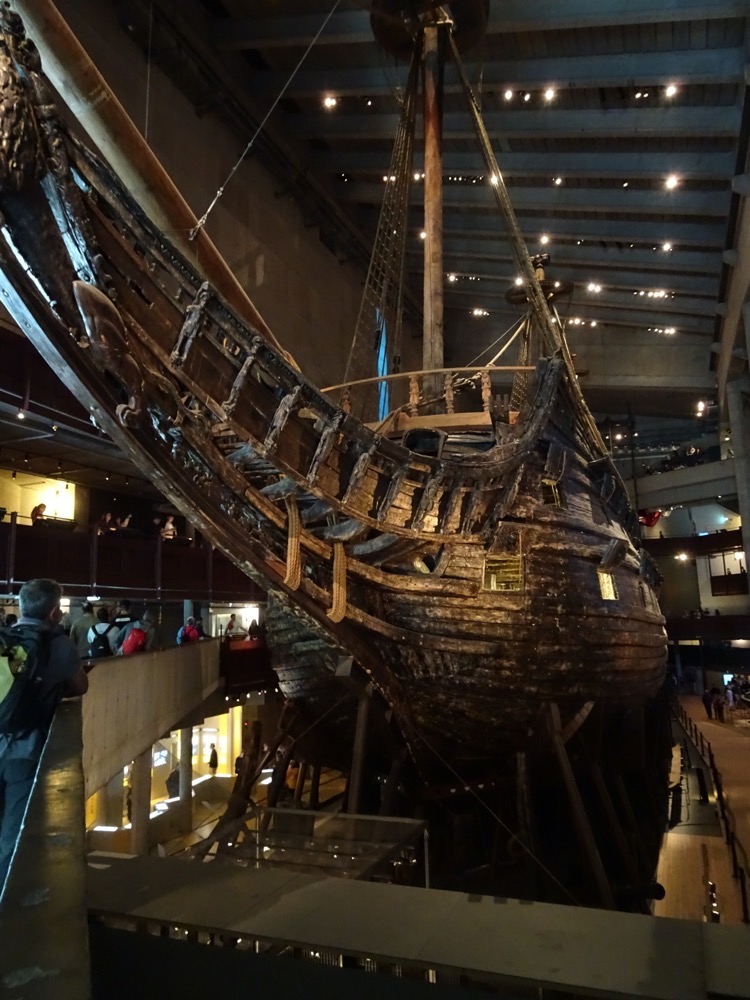
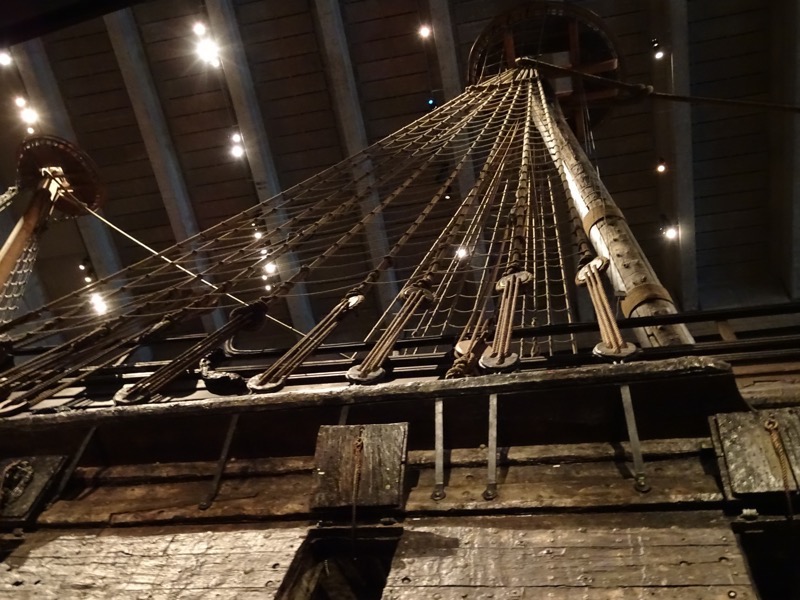 After this, I decided to visit the Nordiska Museet. The Nordic Museum is a Swedish cultural history museum, located at Lejonslätten in the Djurgården. They say, if you want to understand the Swedes and Sweden, you must visit here. The museum attempts to preserve the daily lives and work of Sweden from the 16thC to today. Apparently, it is Sweden’s largest cultural history museum with a collection of over 1.5 million items – needless to say, I did not see them all. And to be completely honest I pretty much skimmed past most things that were post-1600 (as you do when you are predominantly interested in medieval history).
After this, I decided to visit the Nordiska Museet. The Nordic Museum is a Swedish cultural history museum, located at Lejonslätten in the Djurgården. They say, if you want to understand the Swedes and Sweden, you must visit here. The museum attempts to preserve the daily lives and work of Sweden from the 16thC to today. Apparently, it is Sweden’s largest cultural history museum with a collection of over 1.5 million items – needless to say, I did not see them all. And to be completely honest I pretty much skimmed past most things that were post-1600 (as you do when you are predominantly interested in medieval history).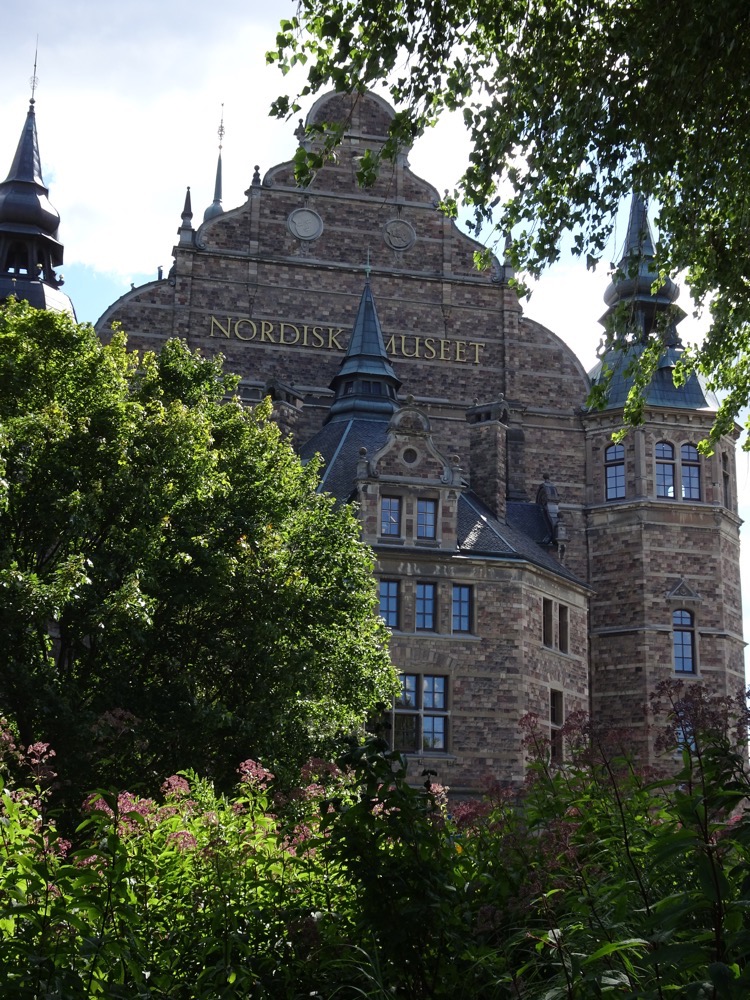 The museum is in a gorgeous building (c1889-1907) founded by Artur Hazelius, who also founded the Skansen Open-Air Museum, which I went to later.
The museum is in a gorgeous building (c1889-1907) founded by Artur Hazelius, who also founded the Skansen Open-Air Museum, which I went to later.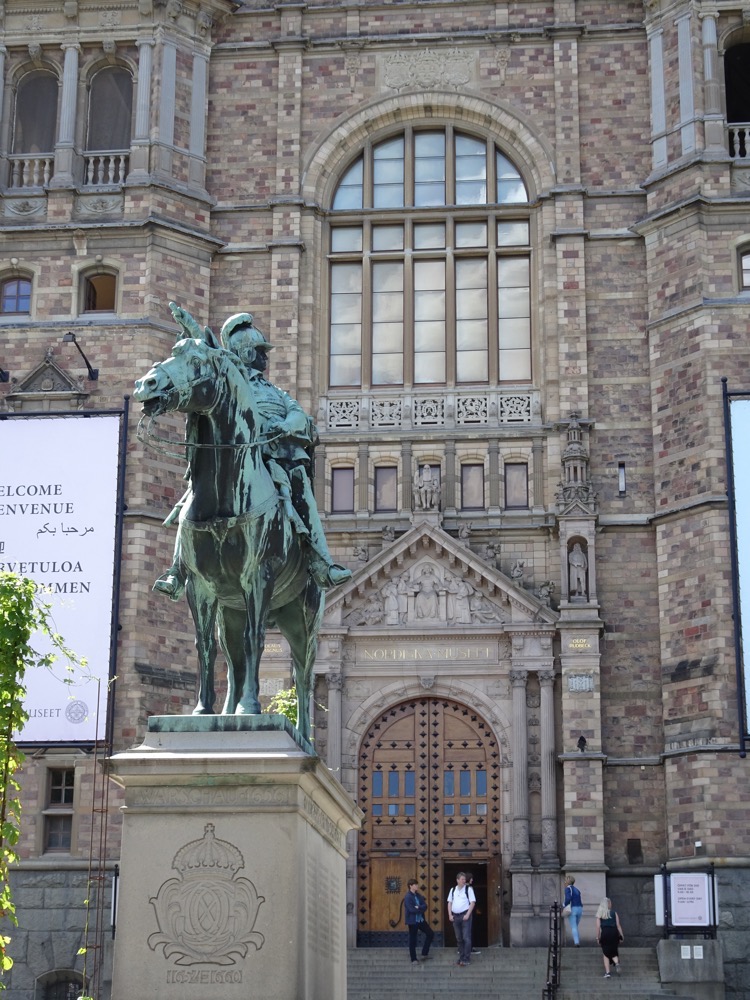 The main hall is spectacular – at the moment there is an exhibition on in here, representing the Aurora Borealis… images, a collection, and a weird darkened room that you can go into, let your eyes adjust, then a visual representation of the northern lights appears overhead. It was interesting, but they have not depicted the phenomenon as vibrant, animated or as bright as it is in real life.
The main hall is spectacular – at the moment there is an exhibition on in here, representing the Aurora Borealis… images, a collection, and a weird darkened room that you can go into, let your eyes adjust, then a visual representation of the northern lights appears overhead. It was interesting, but they have not depicted the phenomenon as vibrant, animated or as bright as it is in real life.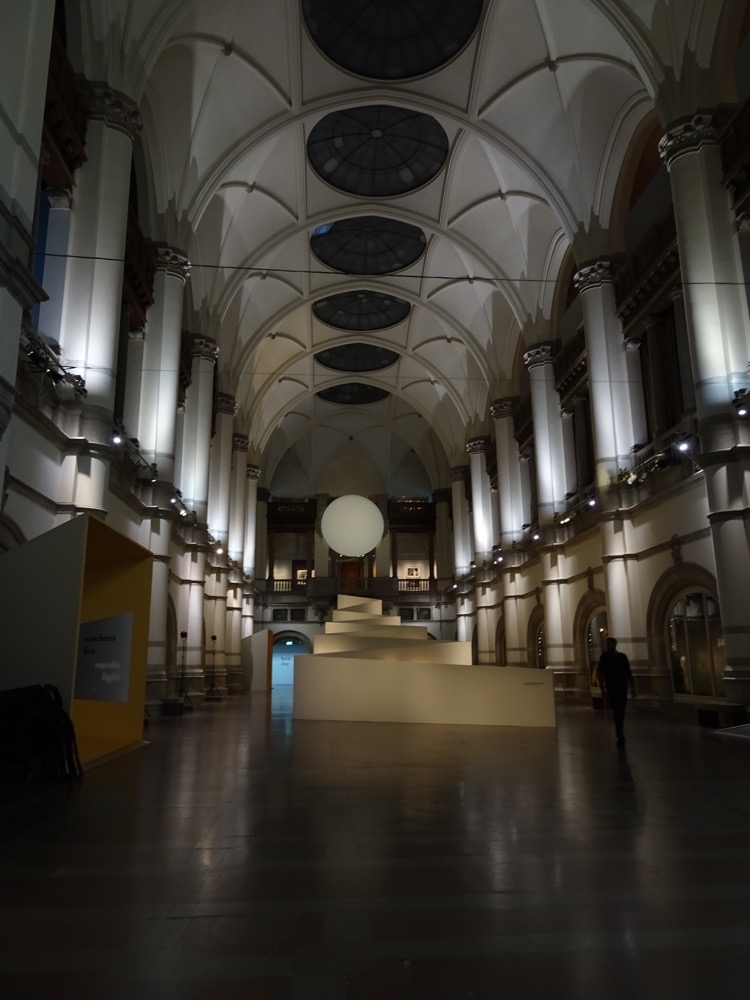 Gustav III carved in oak and made enormous.
Gustav III carved in oak and made enormous.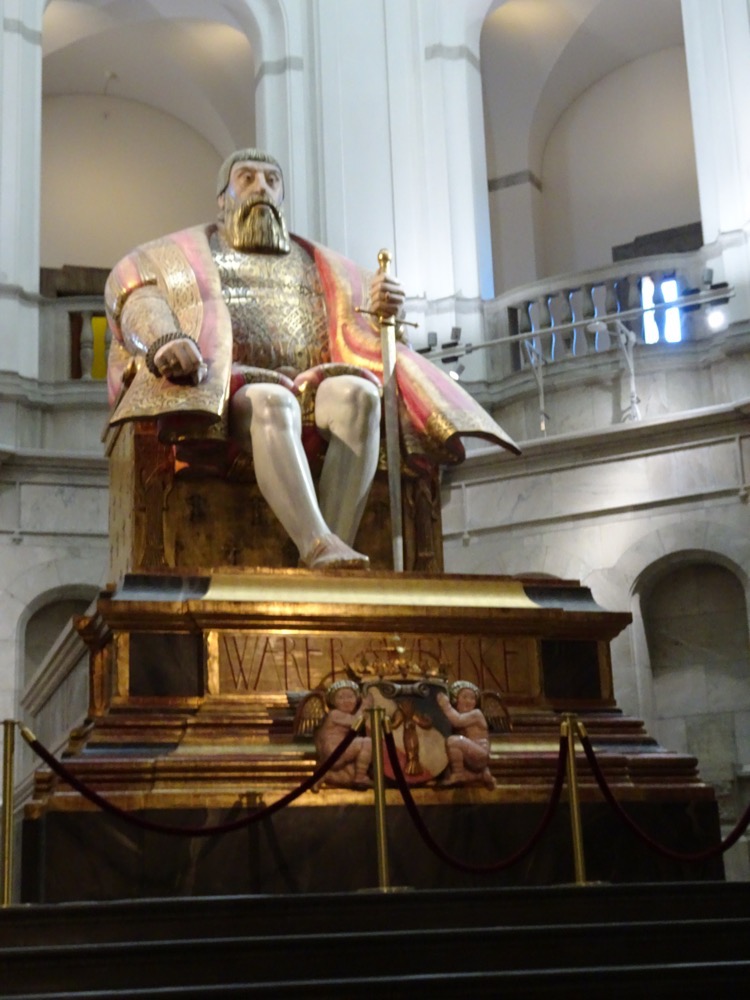 There was a historical costume exhibition section, but everything was post-17thC, so I kinda hopped and skipped through that with a few stops to enjoy the fabrics.
There was a historical costume exhibition section, but everything was post-17thC, so I kinda hopped and skipped through that with a few stops to enjoy the fabrics.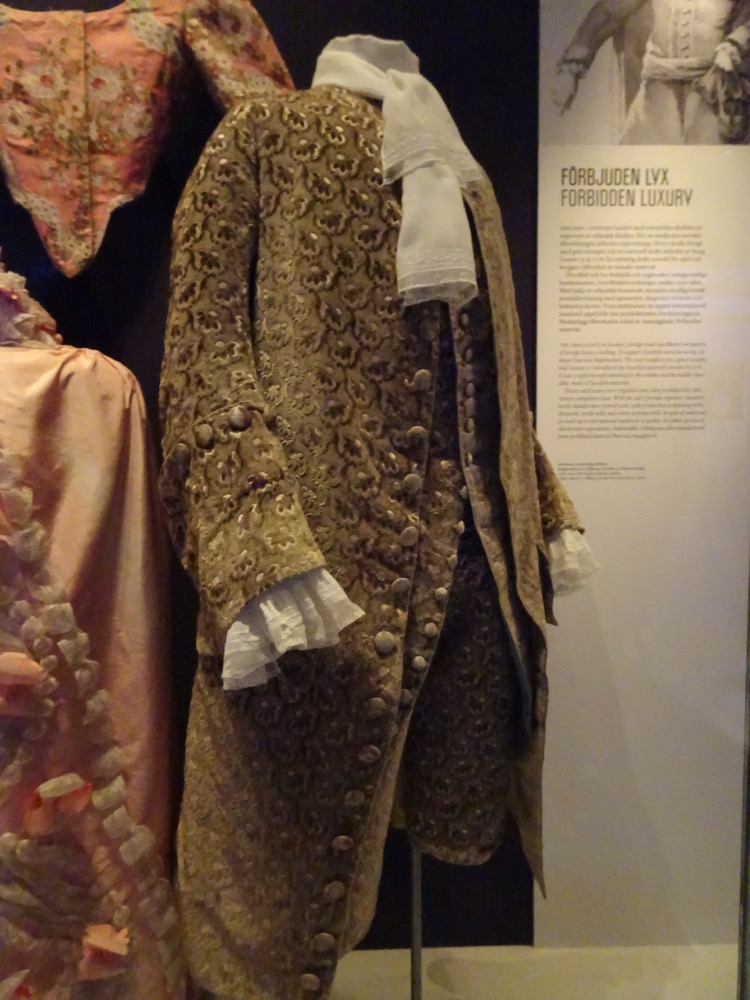
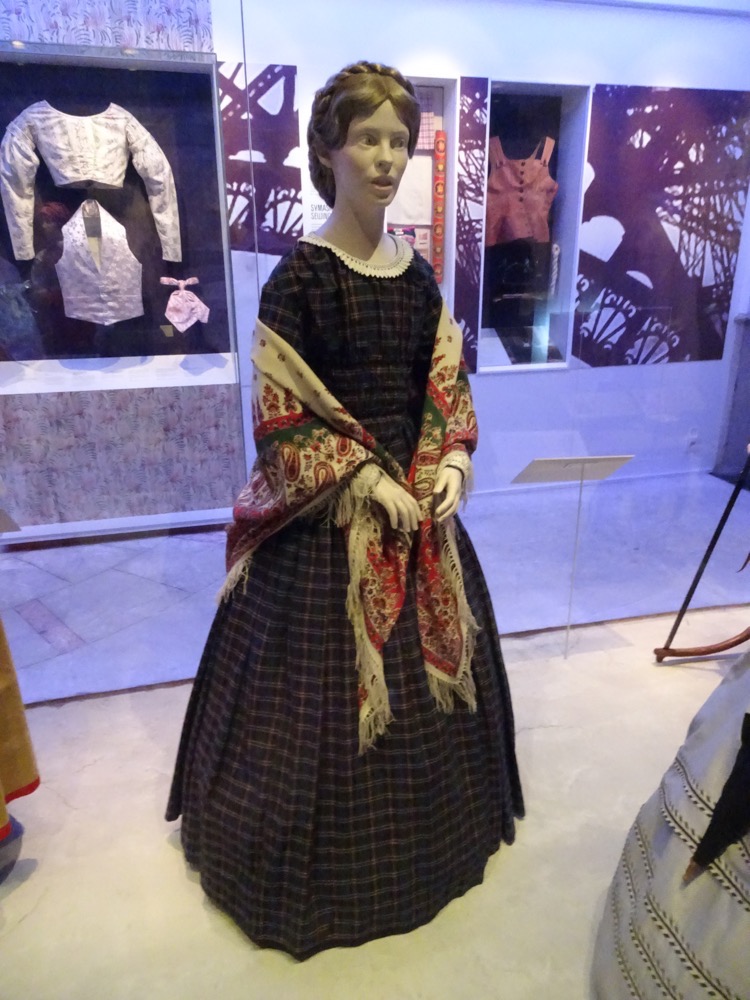
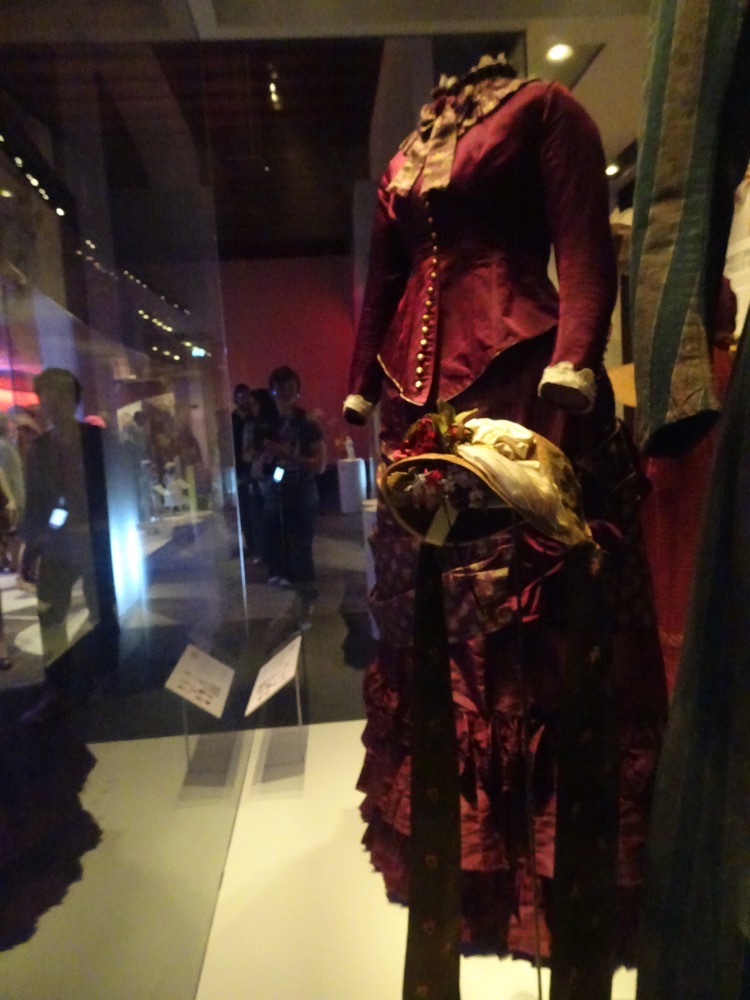
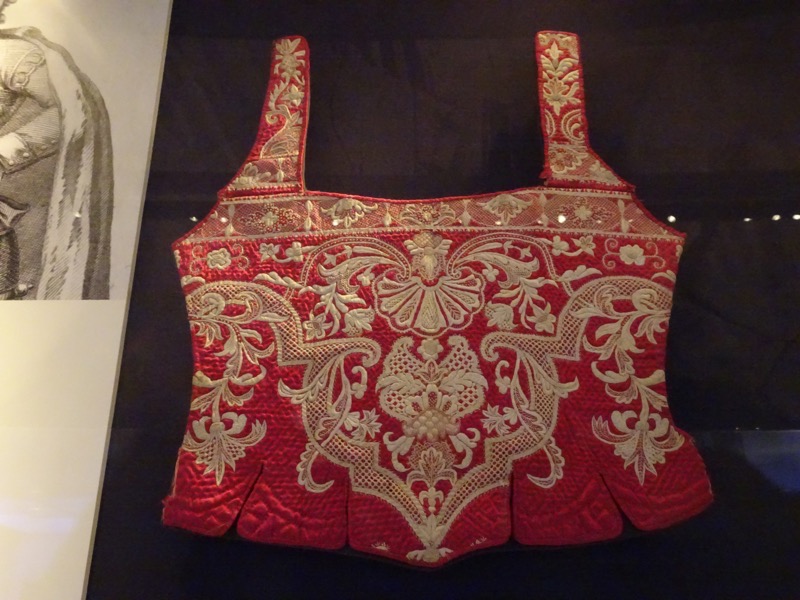
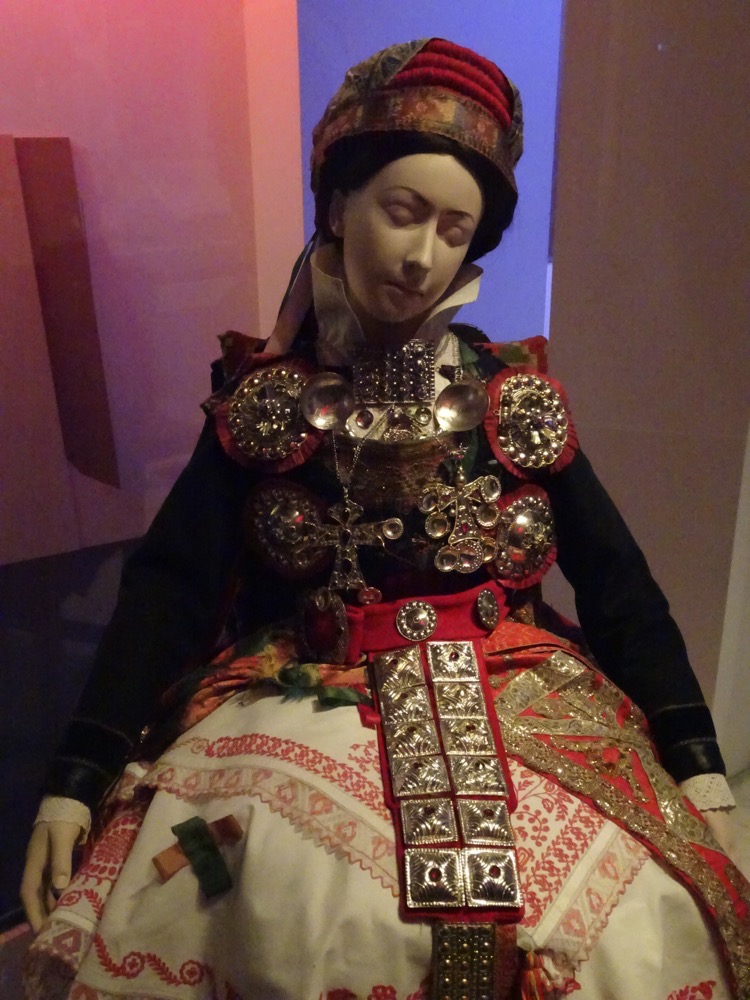 Then there is an extensive jewellery collection – but again, all items were 17th-18thC, so I didn’t record any particular detail of them, just enjoyed the pretties and took a few photos of the more stunning piece.
Then there is an extensive jewellery collection – but again, all items were 17th-18thC, so I didn’t record any particular detail of them, just enjoyed the pretties and took a few photos of the more stunning piece.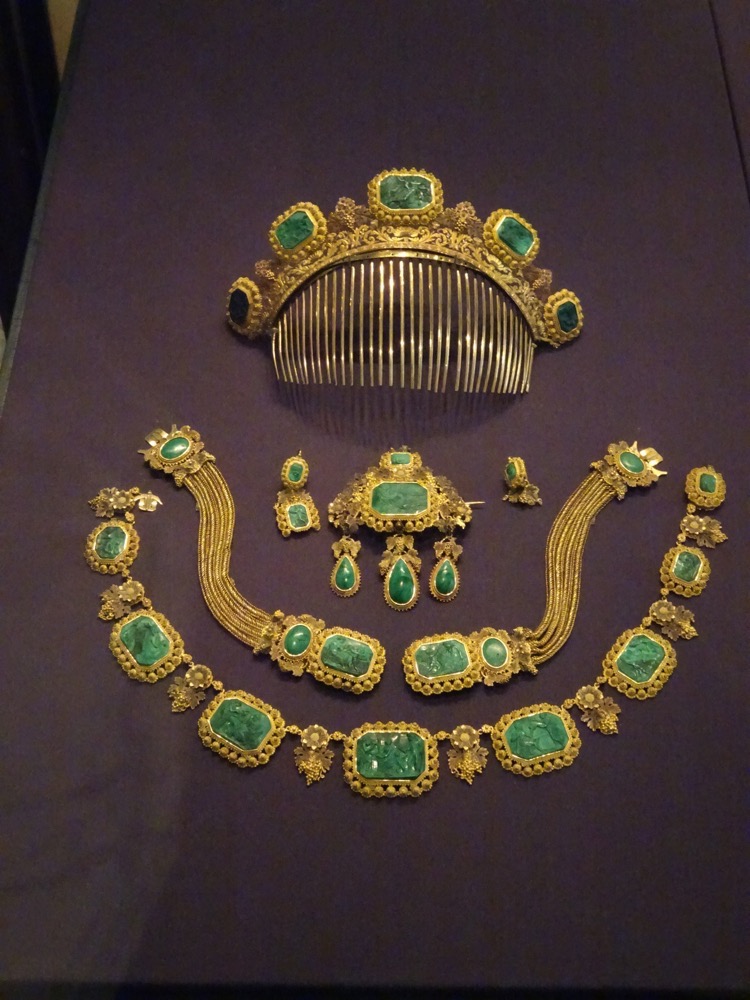
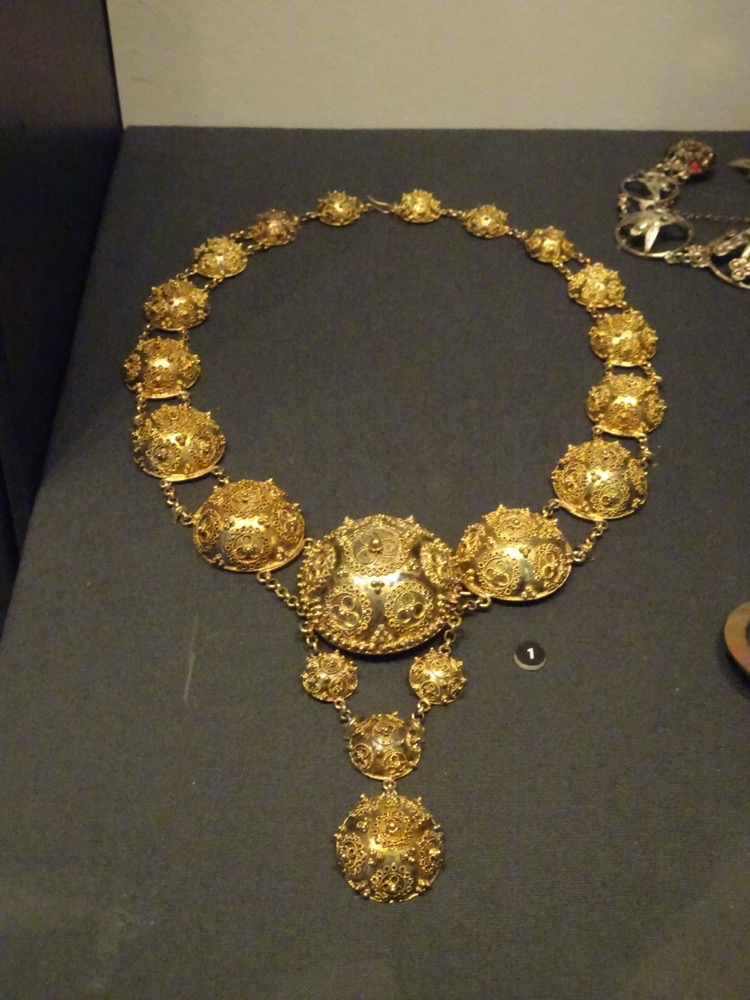
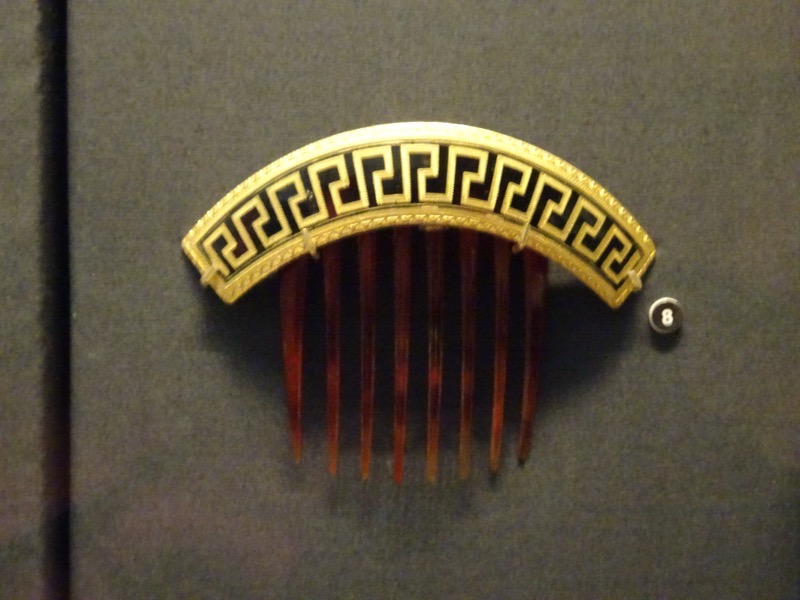
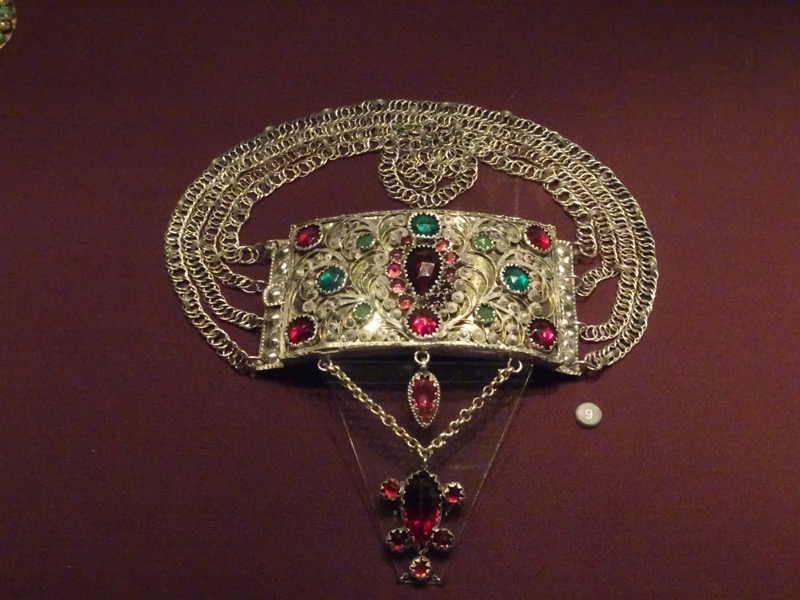
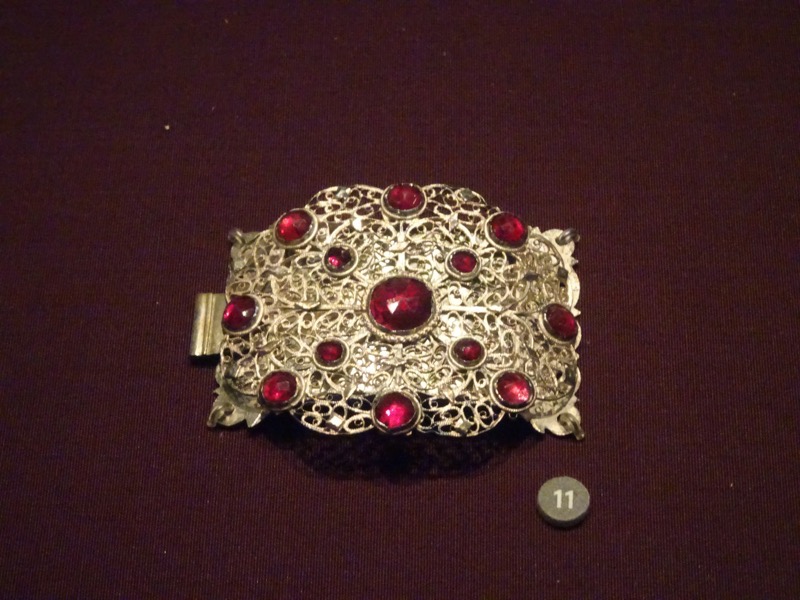 Bit obscure – but these are 18thC brooches.
Bit obscure – but these are 18thC brooches.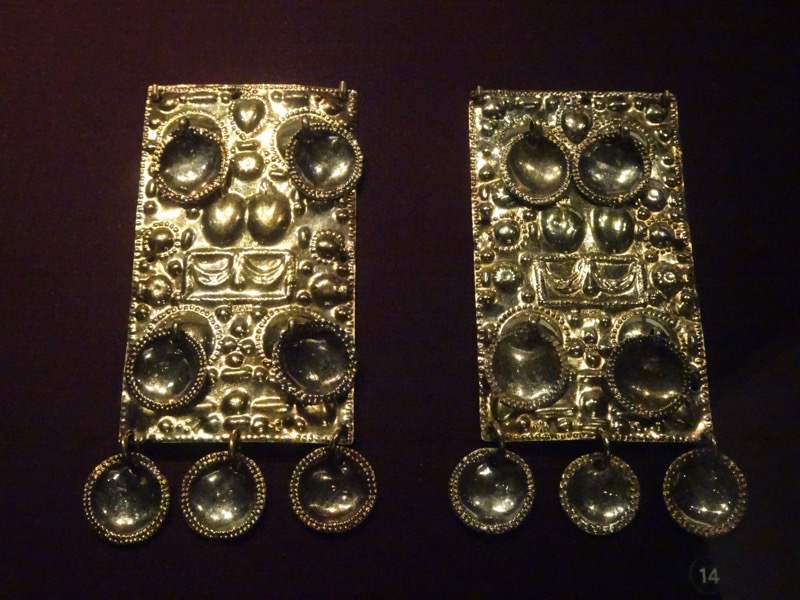
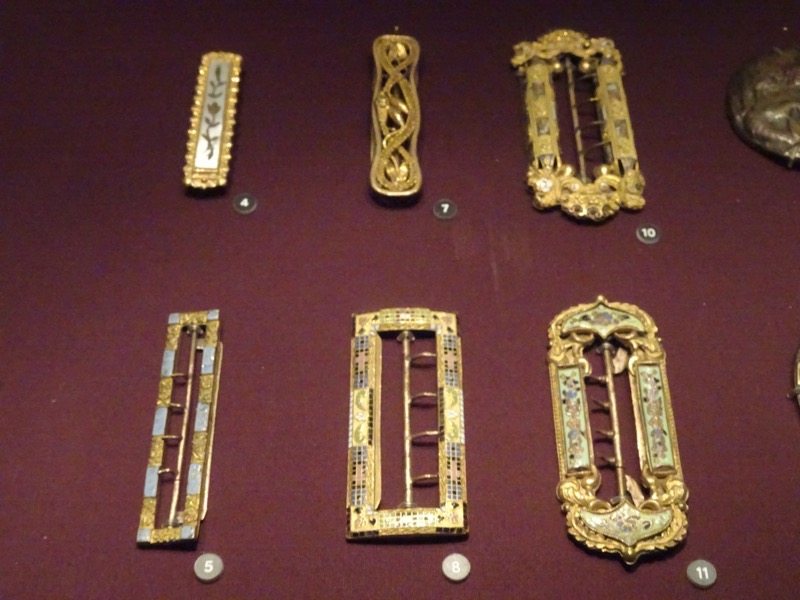 And then a toy and dollhouses exhibit… which was pretty cool. I have seen large royal doll houses in the UK, and in Austria. I’ve never really understood the fascination with them. I was always more of a train sets and footballs kinda kid.
And then a toy and dollhouses exhibit… which was pretty cool. I have seen large royal doll houses in the UK, and in Austria. I’ve never really understood the fascination with them. I was always more of a train sets and footballs kinda kid.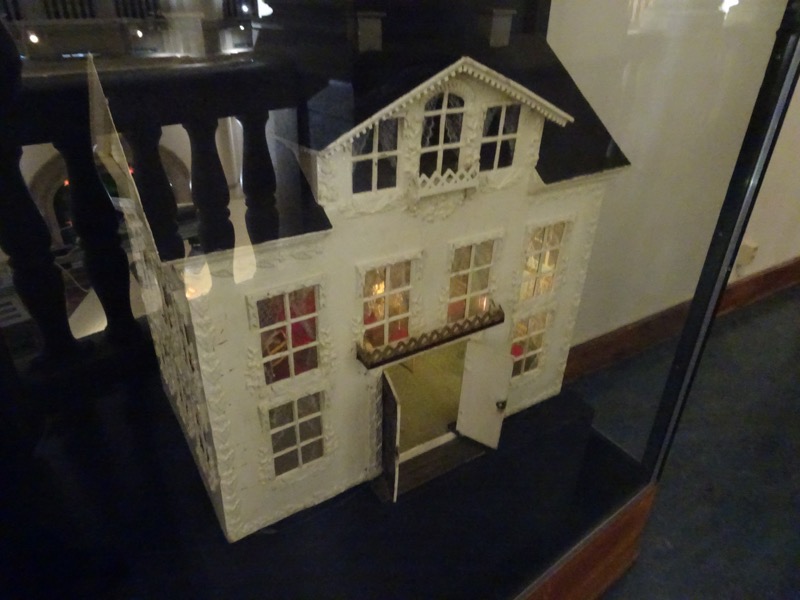
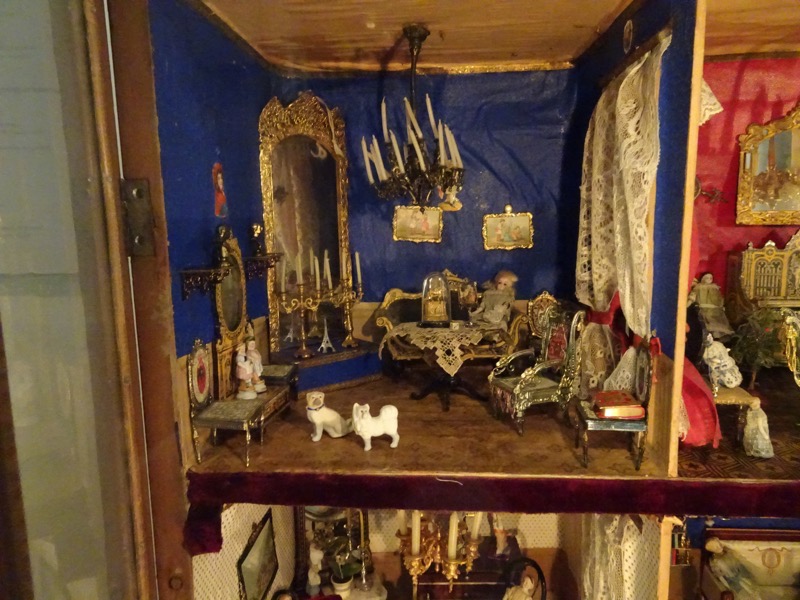
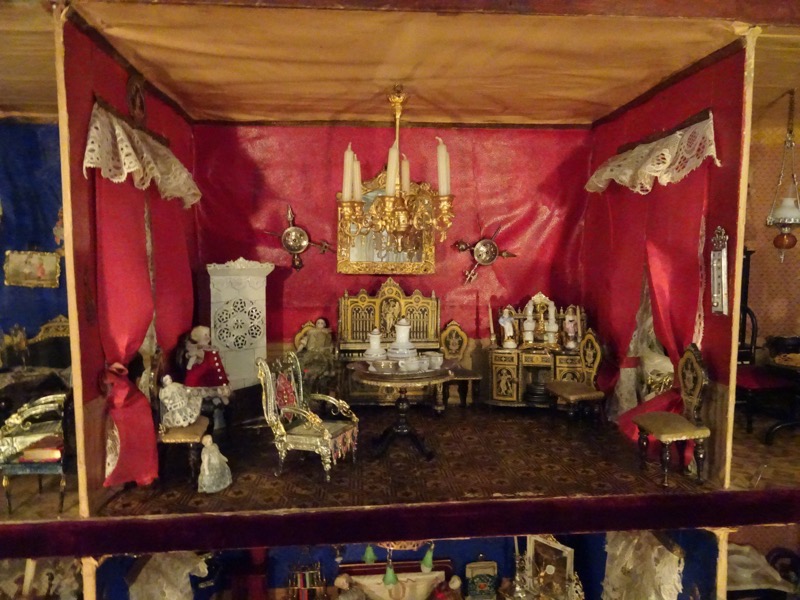 And then I got to the tableware… All photos included here are pre 17thC. Serving dishes, drinking horns, ewers, knives, spoons and all good things. I have a bit more information on some of the items came from – but they are all made in Sweden and all date from the 1500s.
And then I got to the tableware… All photos included here are pre 17thC. Serving dishes, drinking horns, ewers, knives, spoons and all good things. I have a bit more information on some of the items came from – but they are all made in Sweden and all date from the 1500s.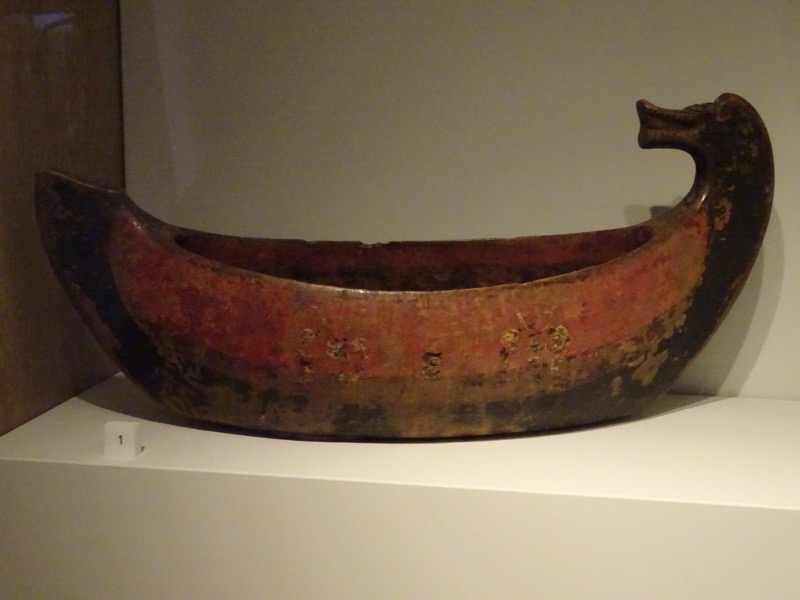
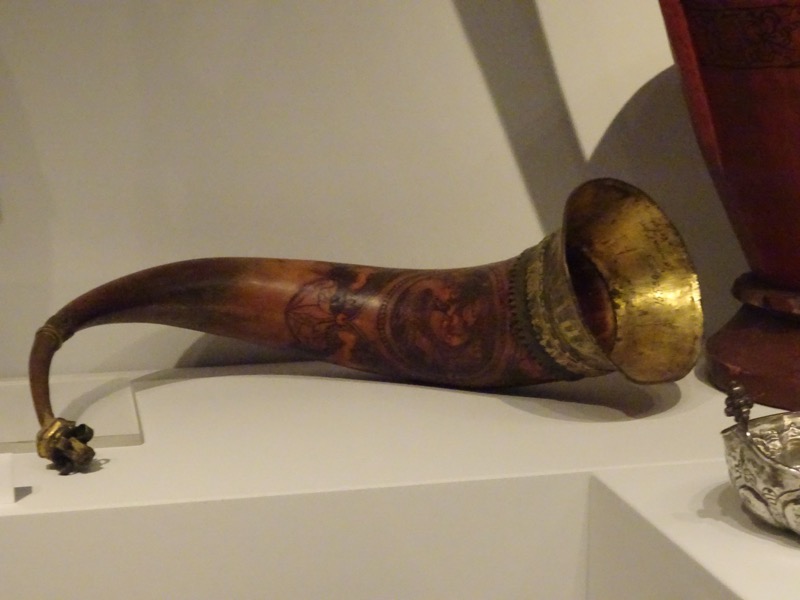
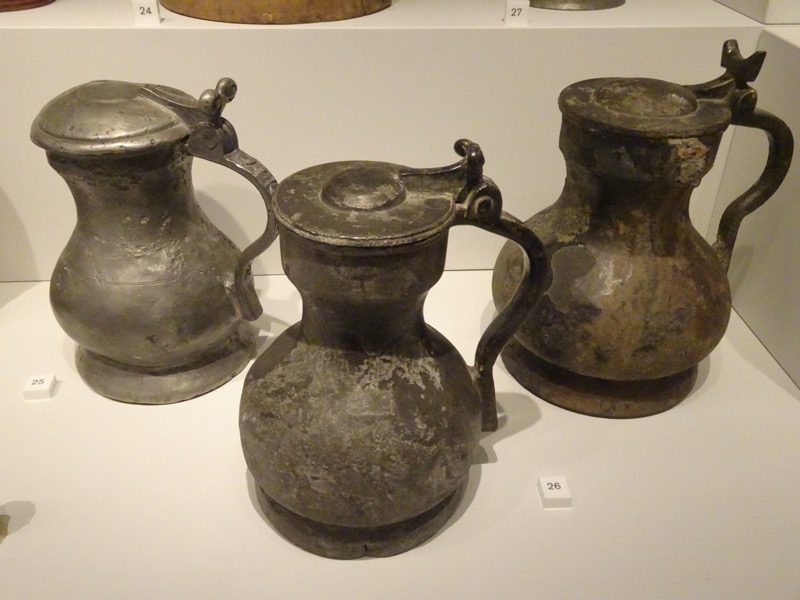
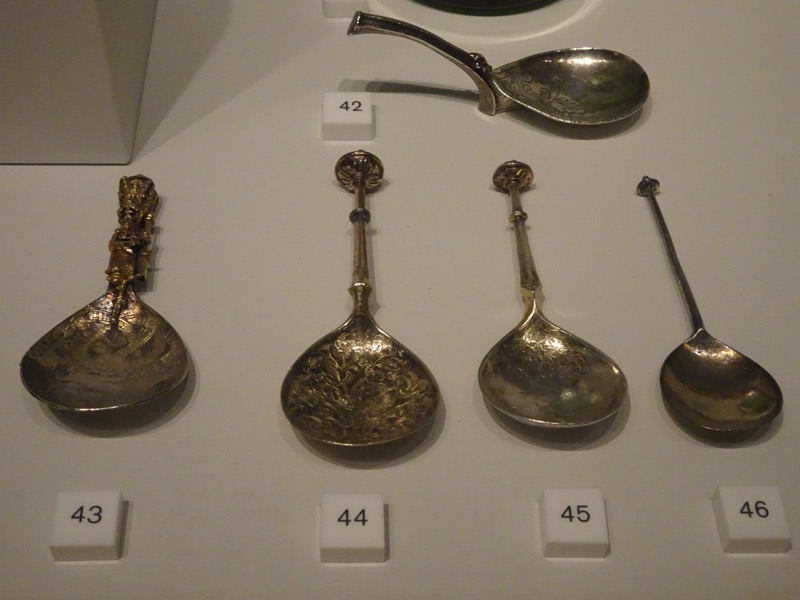
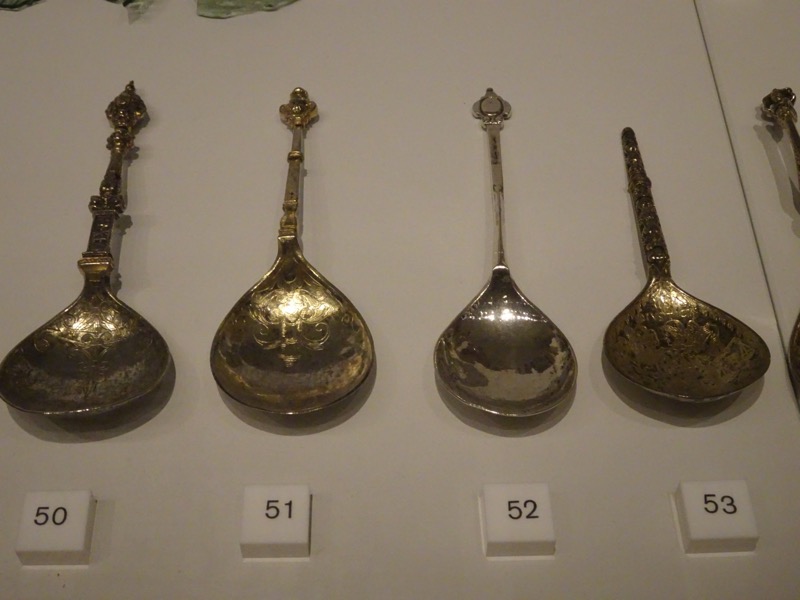
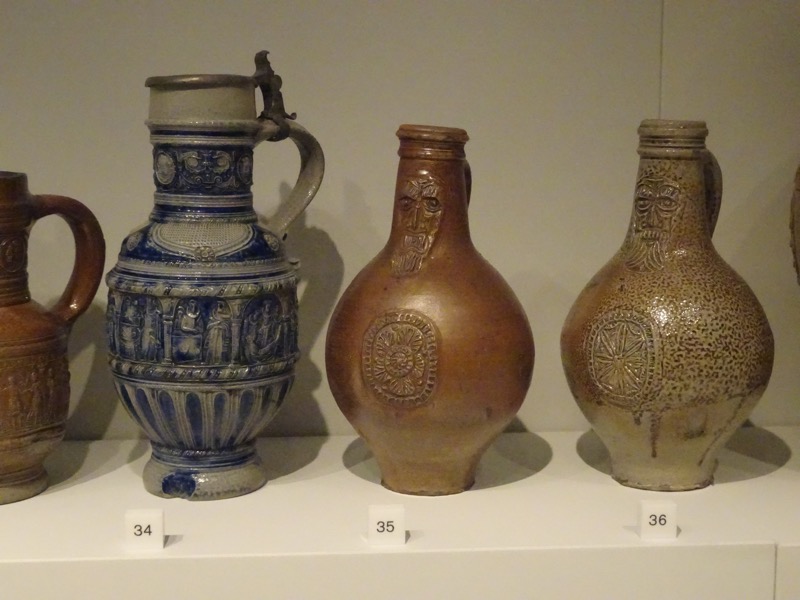
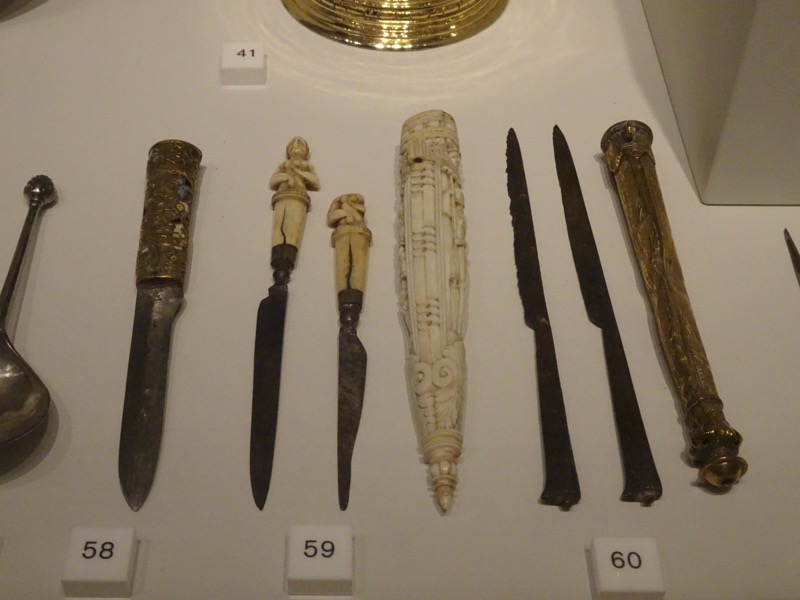 Owen, if you are reading this – this travel KFS set should be on your ‘to-do’ list… it’s c.1560 and has a carved wooden case to store them in.
Owen, if you are reading this – this travel KFS set should be on your ‘to-do’ list… it’s c.1560 and has a carved wooden case to store them in.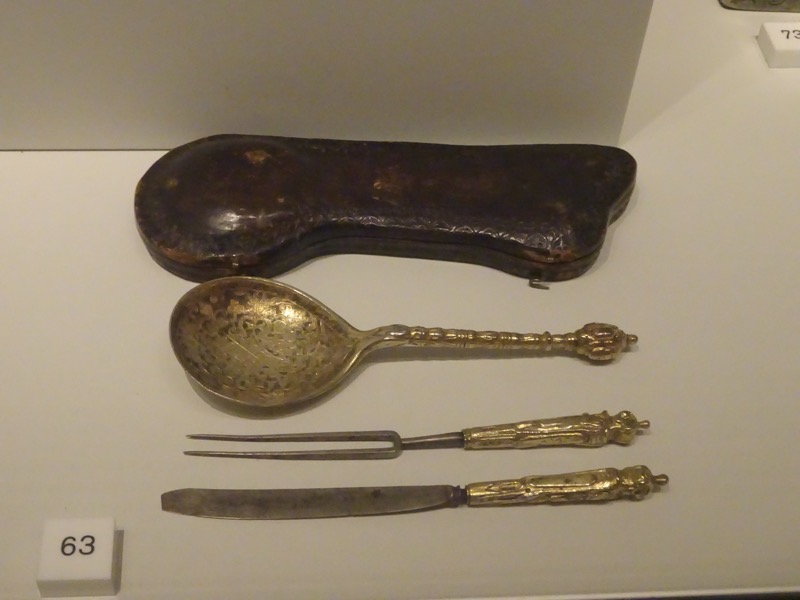
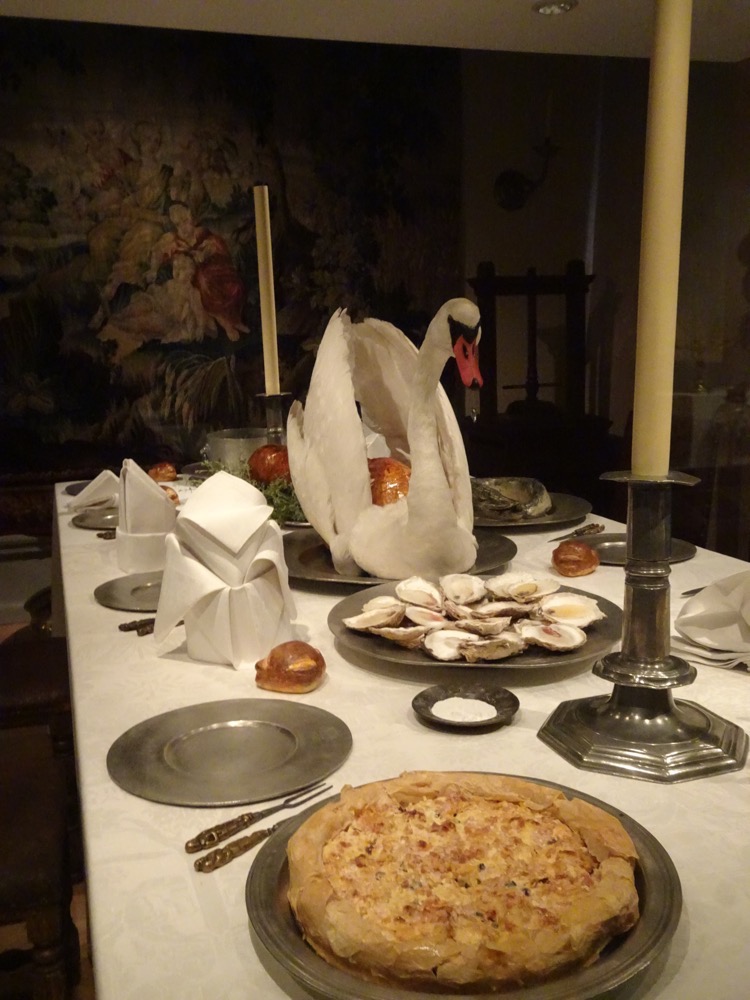 Carving set c.1589
Carving set c.1589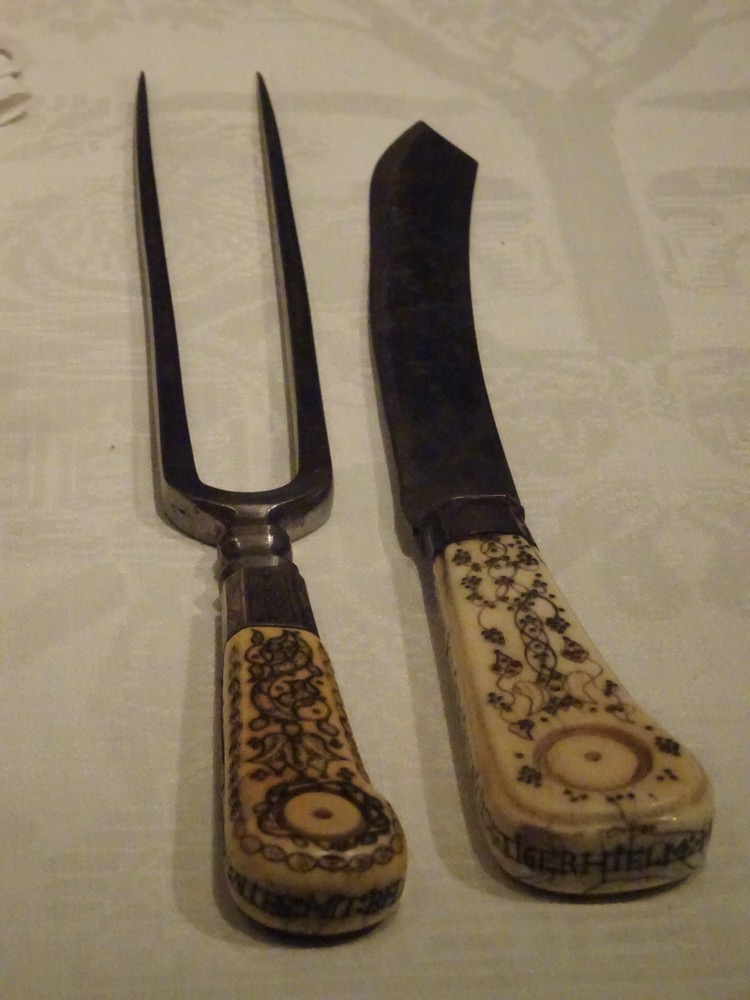
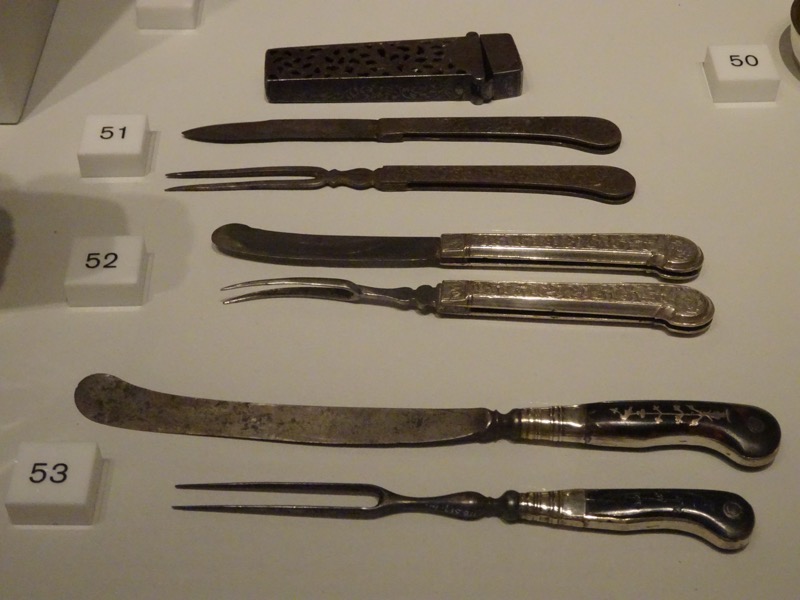 I also saw some photographic exhibitions, a series of dioramas depicting Nordic traditions (covering everything from weddings to Christmases to funerals), an exhibition on Swedish furniture and lighting design and the ever present museum gift shop. I have discovered that I’m not that fond of modern Swedish design… well, actually that is not entirely true. I have never been a fan of Ikea design either – and the museum worthy designer objects exhibition seemed to be the precursor to a modern Ikea catalogue. So I should not have been surprised to find it a little lacking in the lustre department for me. It’s just not my cup of tea.
I also saw some photographic exhibitions, a series of dioramas depicting Nordic traditions (covering everything from weddings to Christmases to funerals), an exhibition on Swedish furniture and lighting design and the ever present museum gift shop. I have discovered that I’m not that fond of modern Swedish design… well, actually that is not entirely true. I have never been a fan of Ikea design either – and the museum worthy designer objects exhibition seemed to be the precursor to a modern Ikea catalogue. So I should not have been surprised to find it a little lacking in the lustre department for me. It’s just not my cup of tea.
After checking out the Nordiska Museet, I thought I would try and ferret out some earlier period artefacts. Much earlier. Nearby was the VikingAliv museum where you can ‘Discover the Age of the Vikings’ according to the blurb on the Stockholm Pass. With ‘exhibits from the Swedish History Museum’, it sounded a little more up my alley. 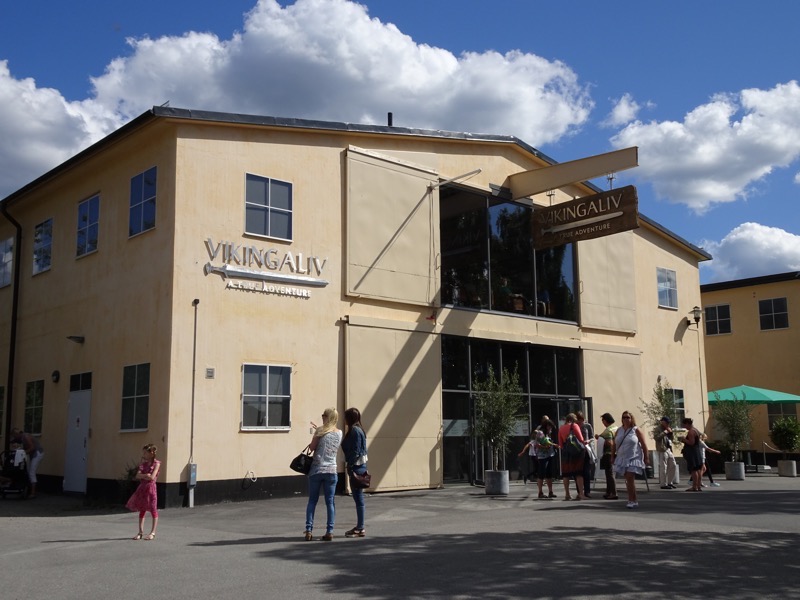 Oh, I was so wrong! This place was 1) expensive to get into but thankfully I got a discount with the Stockholm Pass, 2) set up for people who know absolutely nothing about iron age history and have to be spoon fed, and 3) finished with an alarming Disneyesque ‘ride’ through models and vignettes depicting a character named Ragnifrid sending her husband, Harald, on a two year journey to find barrels of silver – complete with fake lightning, a too loud and over enthusiastic commentary track, dodgy visual effects and a jerky carriage/train thing taking you through rooms in the dark. It was Madame Tussauds all over again!
Oh, I was so wrong! This place was 1) expensive to get into but thankfully I got a discount with the Stockholm Pass, 2) set up for people who know absolutely nothing about iron age history and have to be spoon fed, and 3) finished with an alarming Disneyesque ‘ride’ through models and vignettes depicting a character named Ragnifrid sending her husband, Harald, on a two year journey to find barrels of silver – complete with fake lightning, a too loud and over enthusiastic commentary track, dodgy visual effects and a jerky carriage/train thing taking you through rooms in the dark. It was Madame Tussauds all over again!
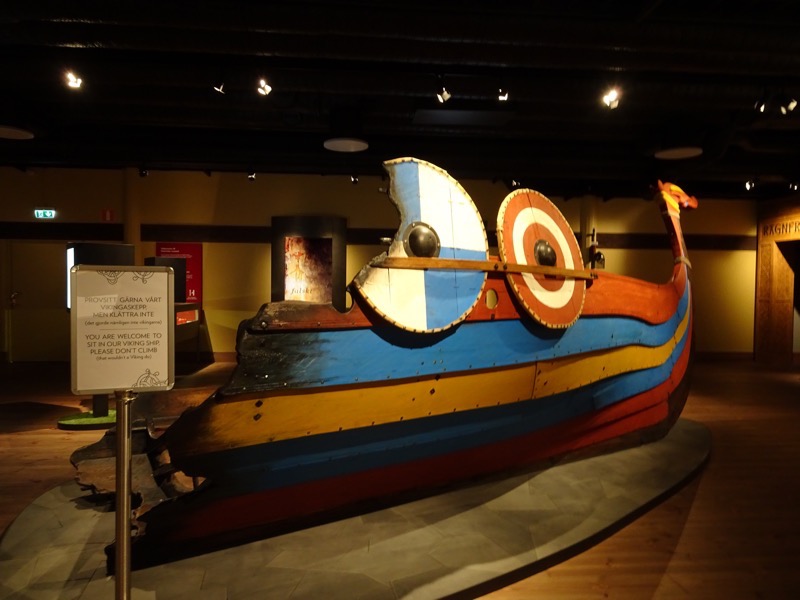 A partial life size replica of a viking longboat. Below, a model of a viking long house…
A partial life size replica of a viking longboat. Below, a model of a viking long house…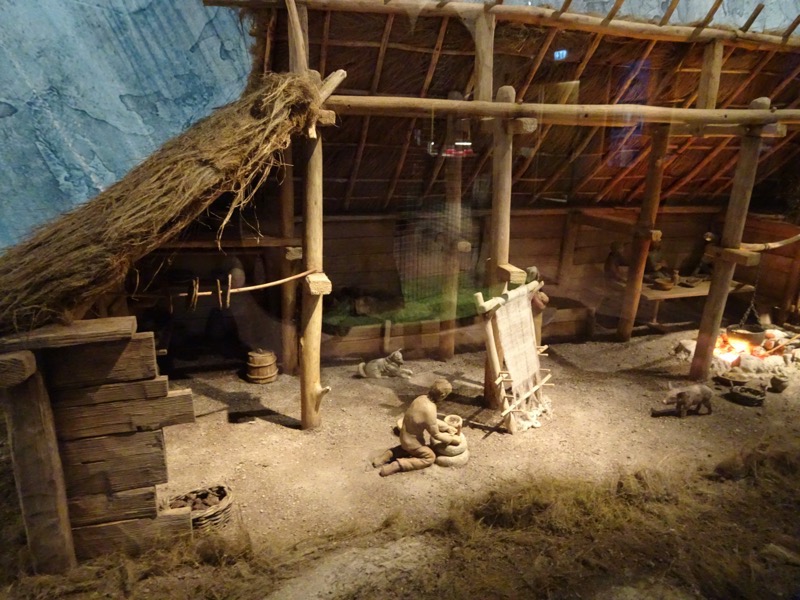
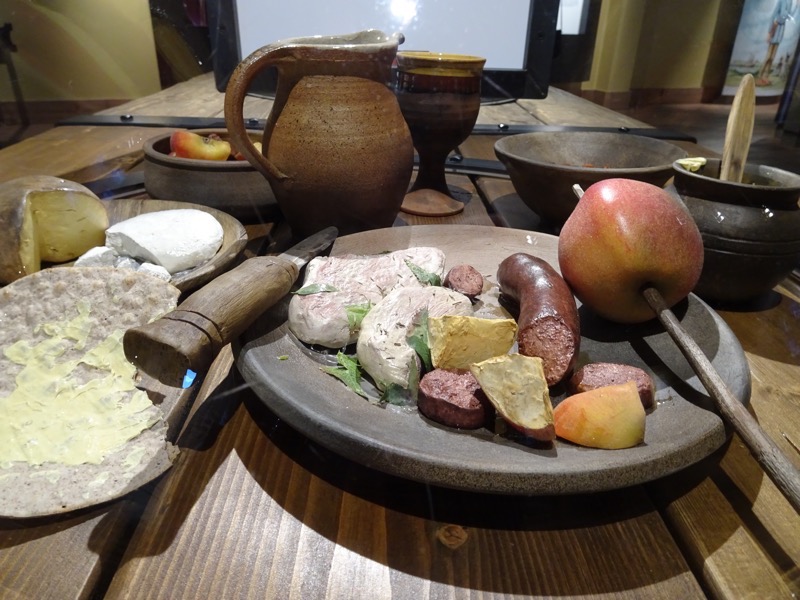 A recreated viking meal: Boiled pork with thyme and lovage, black pudding with pieces of pork and apple, honey-glazed ham, freshly baked crispbread with butter. Smoked cheese with cummin, goat’s milk feta, bowls of nuts and apples on a skewer, and mead.
A recreated viking meal: Boiled pork with thyme and lovage, black pudding with pieces of pork and apple, honey-glazed ham, freshly baked crispbread with butter. Smoked cheese with cummin, goat’s milk feta, bowls of nuts and apples on a skewer, and mead.
Some actual artefacts – obviously these are the items on loan from the Swedish History Museum. There were only about 30 items in total, so I dare say I had better add the actual museum to my list. 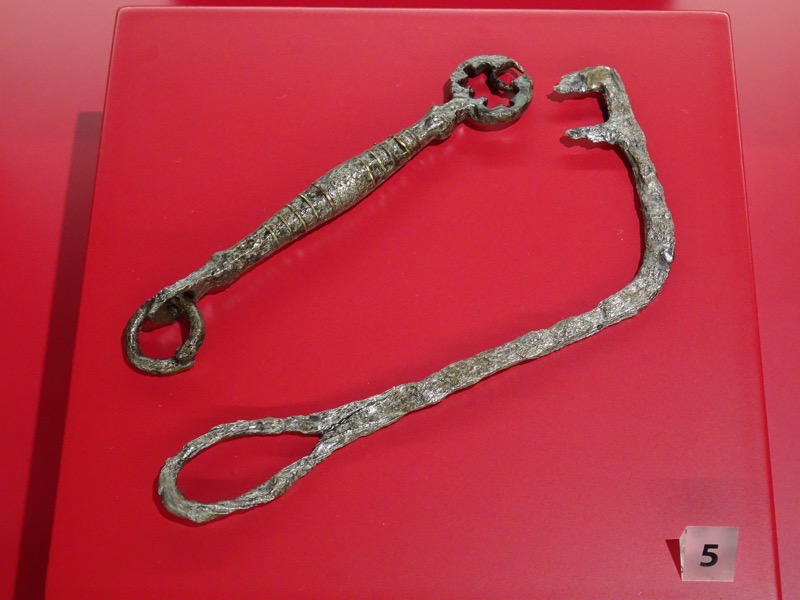 Key, iron bronze and copper, bolt key & Key iron, Functional claw key.
Key, iron bronze and copper, bolt key & Key iron, Functional claw key.
Solberga Koping Parish, Oland.
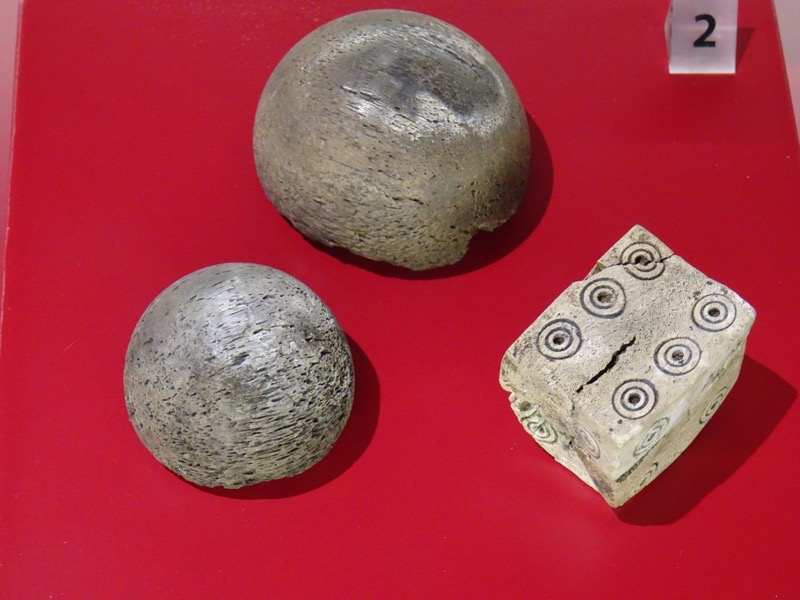 Counters and dice, antler and bone.
Counters and dice, antler and bone.
Harads-Kumla, Harad Parish, Sodermanland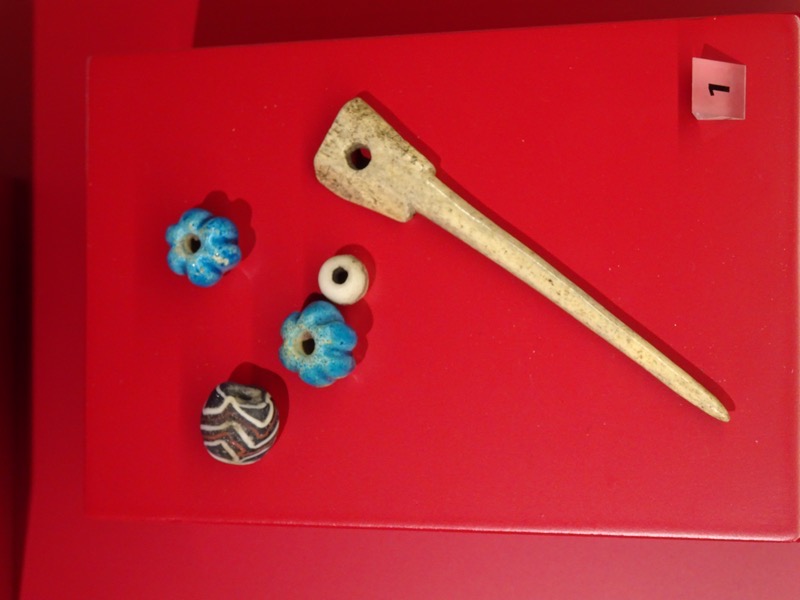 Spindle whorl, burnt clay, Solberga, Koping Parish, Oland
Spindle whorl, burnt clay, Solberga, Koping Parish, Oland
Beads, glass and faience with thin threads of red and blue glass around the middle, Harads-Kumla, Harad Parish, Sodermanland
And then there was the unexpected ‘ride’ thing… all I can say is, “Oh, dear.”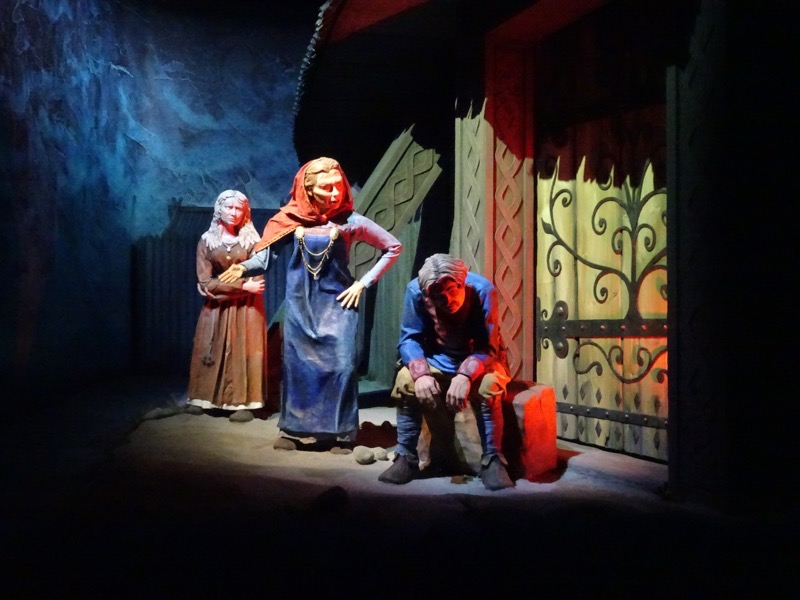
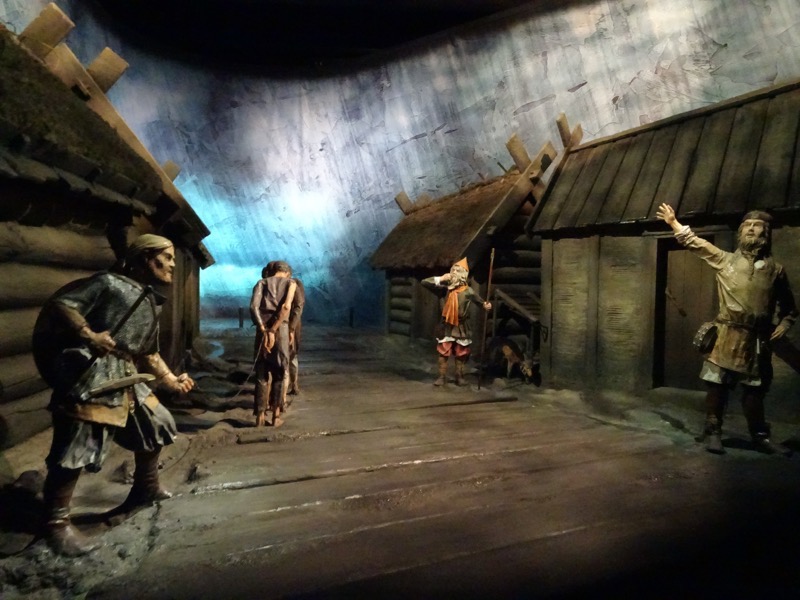
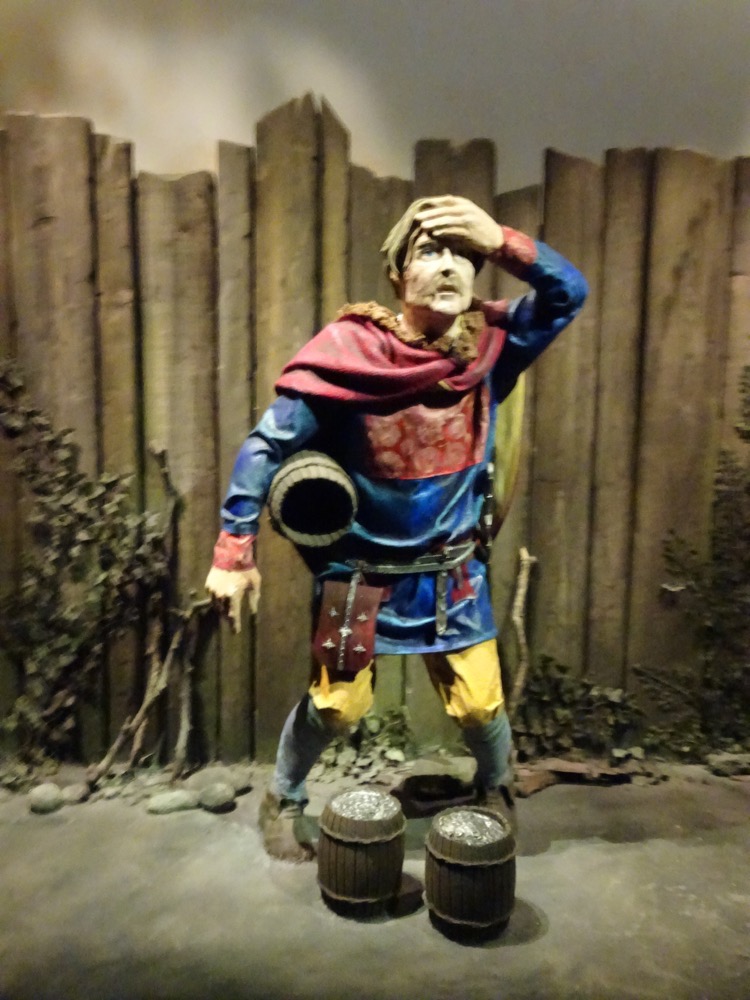
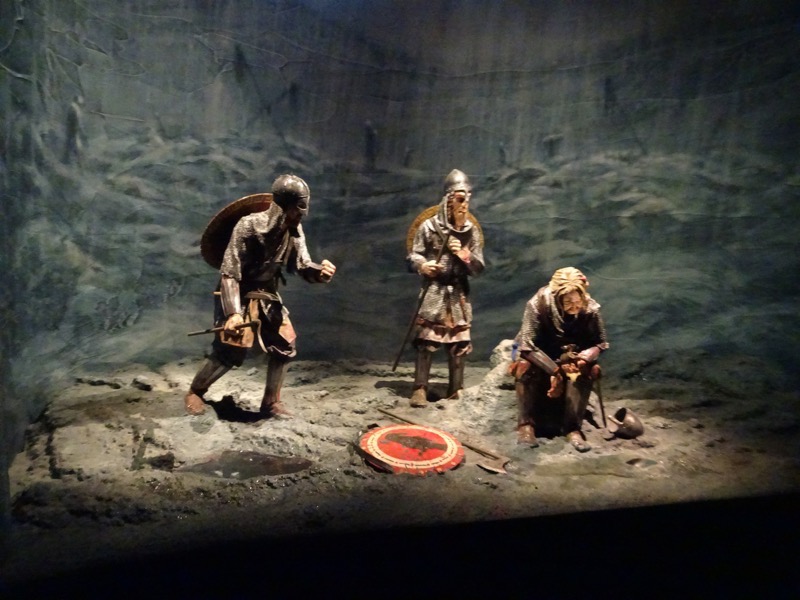
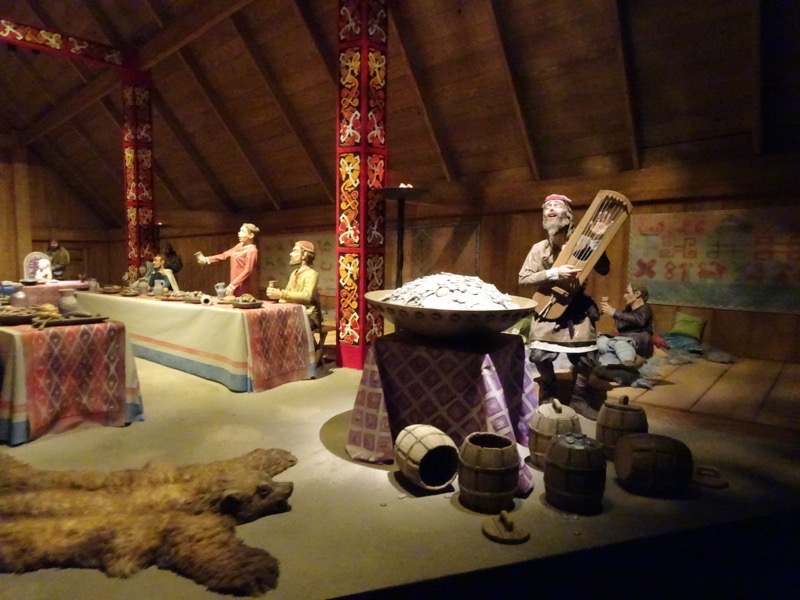
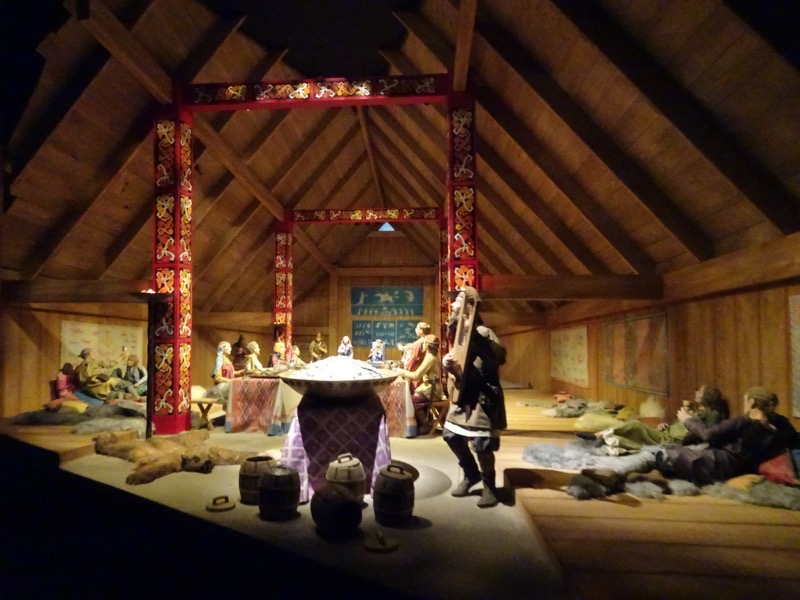 Thunderbolts and lightning, very very frightening.
Thunderbolts and lightning, very very frightening.
Which prompted me to post this to my friends on Facebook. I know it looks ironic, but at the time, it really really wasn’t. Nevermind, I have a few more days to find the ‘real history’! 😉 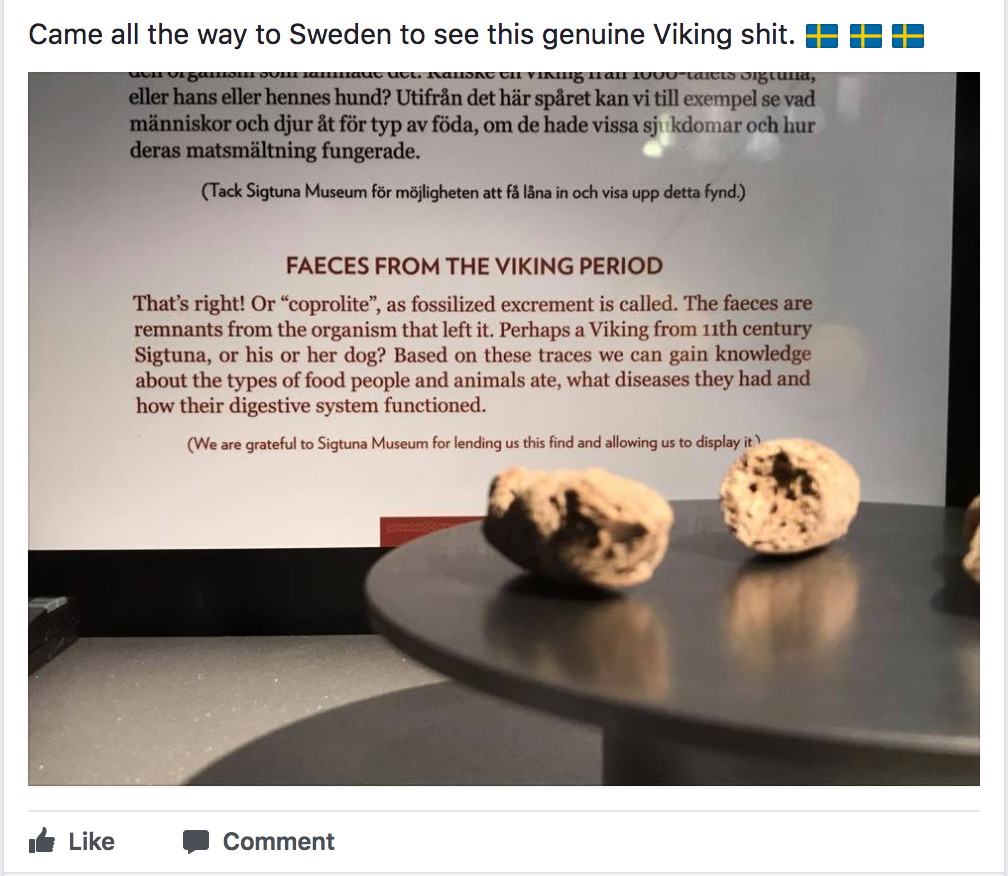
From here, I decided to stop by the Spirits Museum – another place included on the Stockholm Pass that I just happened to be walking past after the VikingsAliv thing. The Stockholm Pass gives you entry to some 60 major attractions in Stockholm, and can offer a significant discount if you plan on going a little nuts on the town’s multitude of museums – which I was absolutely planning to do.
The Spirits Museum houses a collection of original Absolut art works – much of which has been featured in the various advertising campaigns over the years, as well as a history of distilling in Sweden, and a tasting of various Swedish spirits – of which Absolut vodka is one of the most successful and most famous.
Andy Warhol – Absolute Art Collection, acrylic on canvas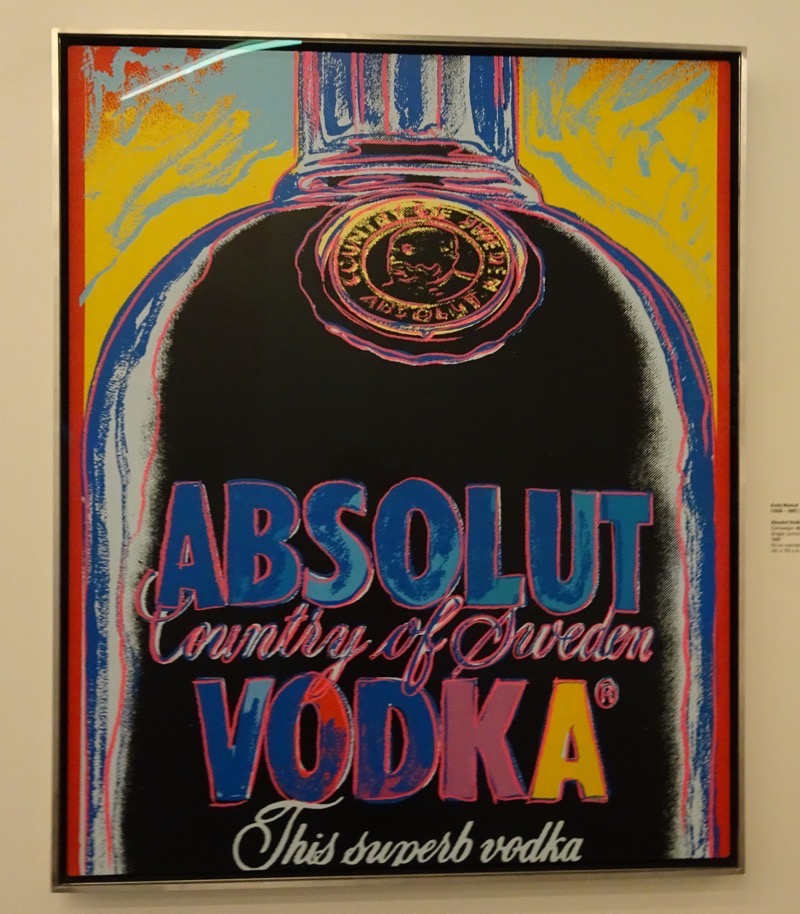 Hiroshi Yamada – “Absolute Yamada”, Oil on wood
Hiroshi Yamada – “Absolute Yamada”, Oil on wood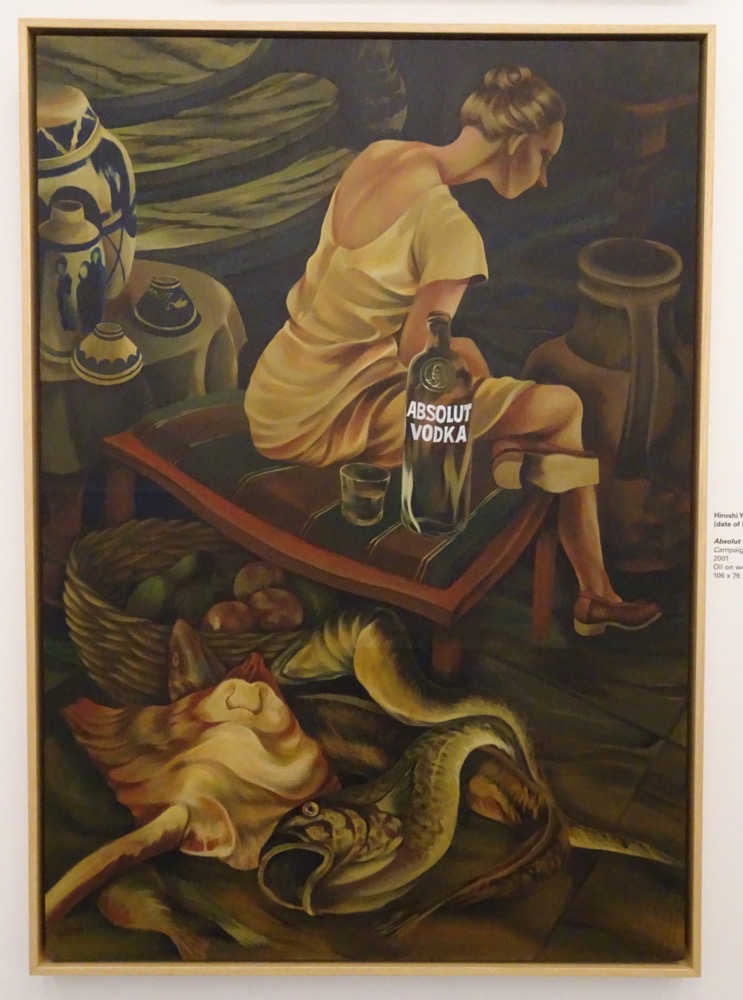
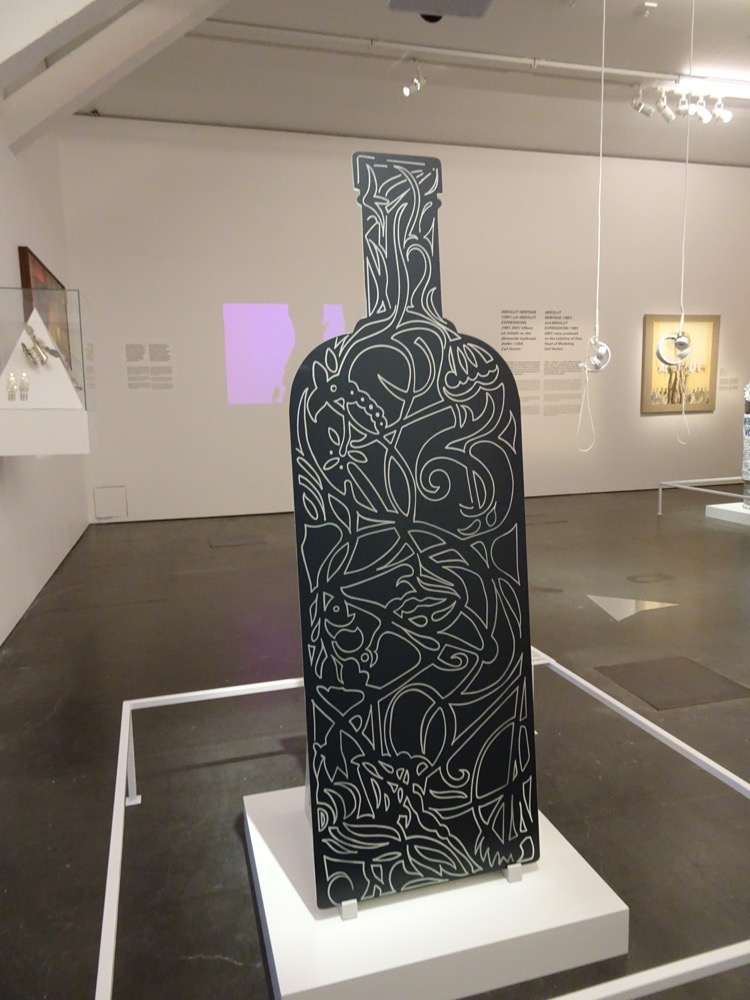
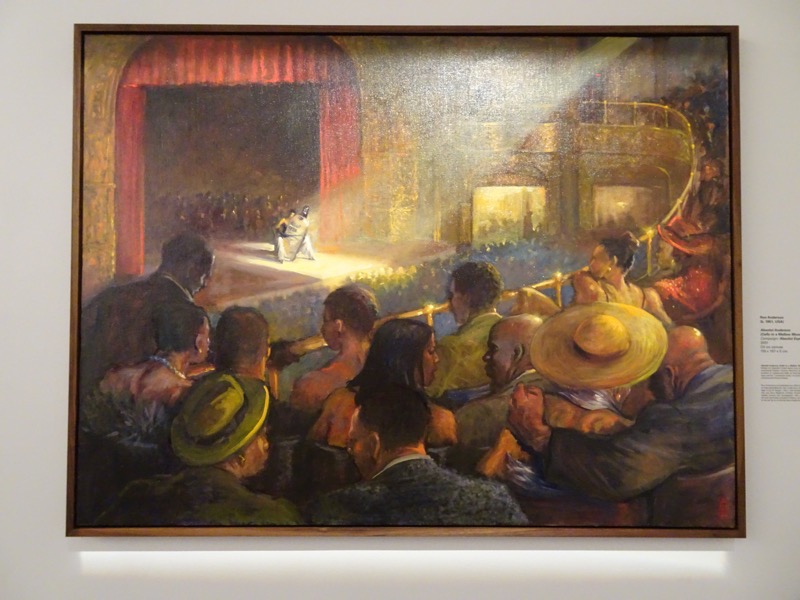 Gregory Warmack – Mr Imagination, sculpture with bottlecaps and tinfoil.
Gregory Warmack – Mr Imagination, sculpture with bottlecaps and tinfoil.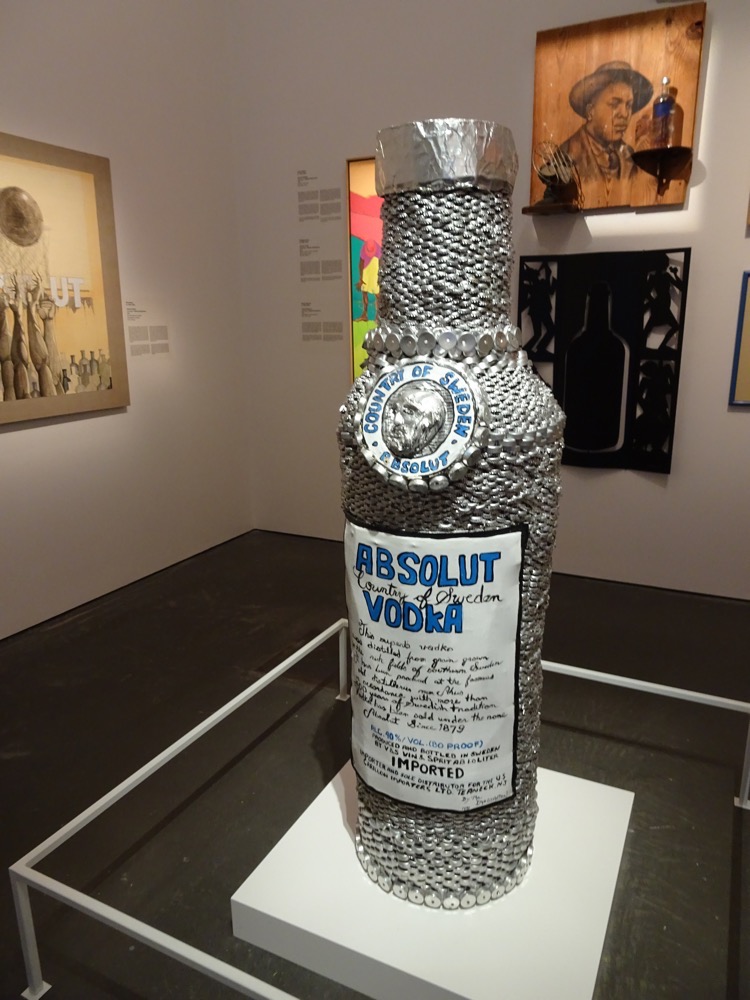
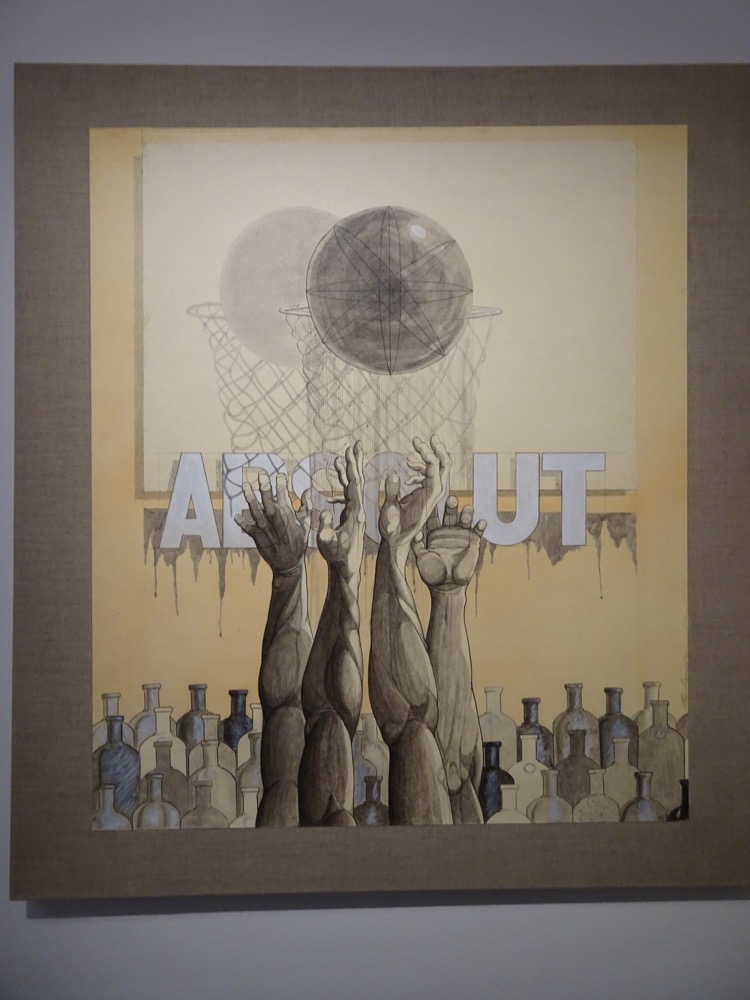 Absolut Bailey – Xenobia Bailey, mixed media hand crochetd, poly yarn and plastic beads.
Absolut Bailey – Xenobia Bailey, mixed media hand crochetd, poly yarn and plastic beads.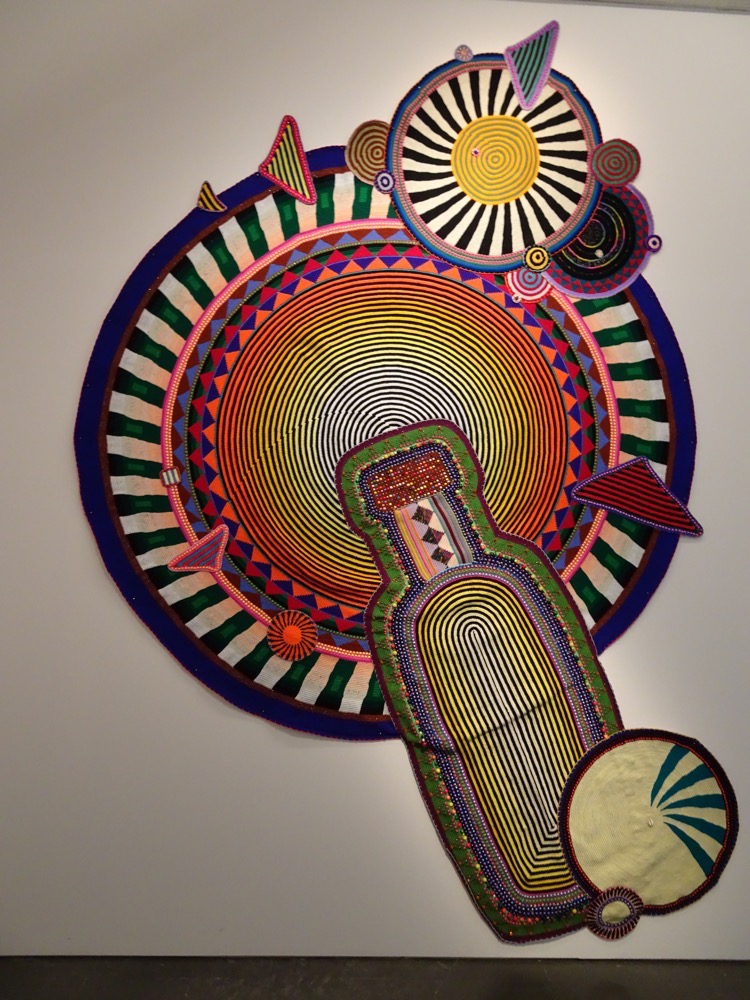 Rostislav Lebedev – Absolut Lebedev, Acrylic on paper.
Rostislav Lebedev – Absolut Lebedev, Acrylic on paper.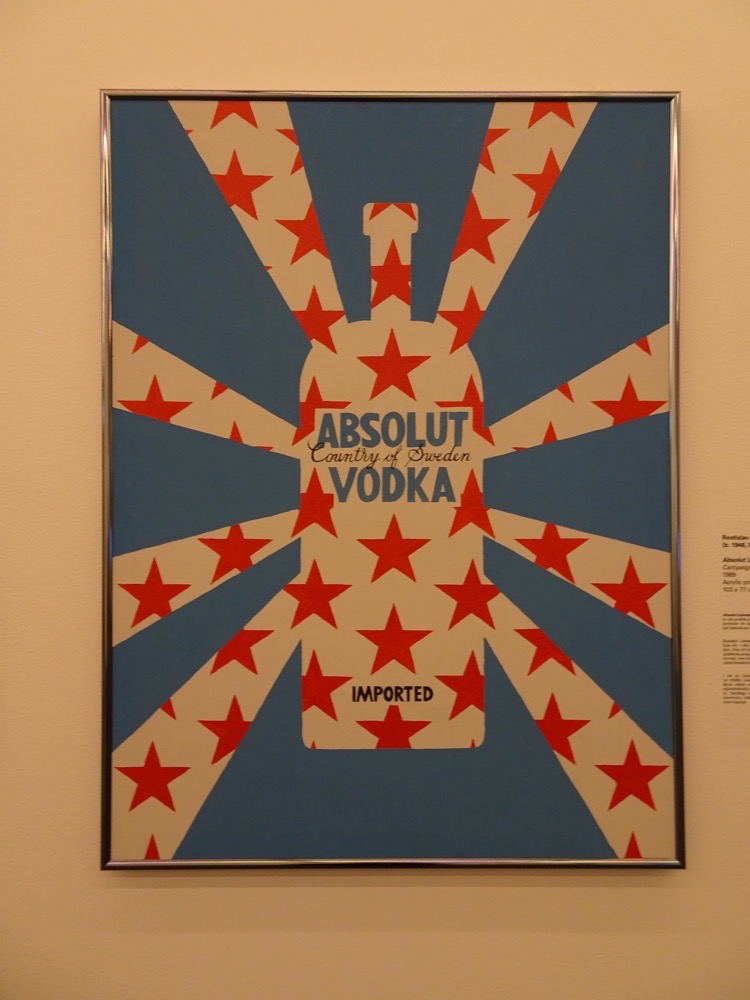 Alexander Kosolapov – Absolut Kosolapov, acrylic on canvas.
Alexander Kosolapov – Absolut Kosolapov, acrylic on canvas.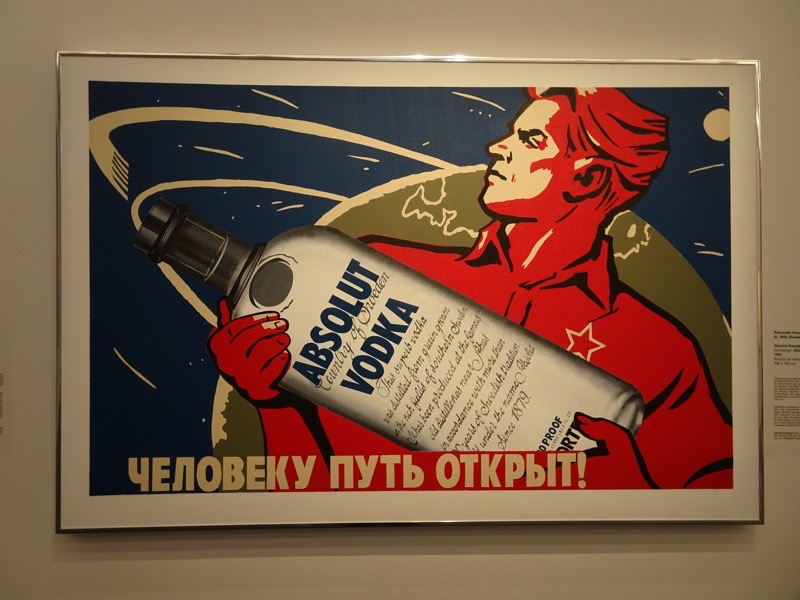 Irina Nakhova – Absolut Nakhova, arcrylic on canvas.
Irina Nakhova – Absolut Nakhova, arcrylic on canvas.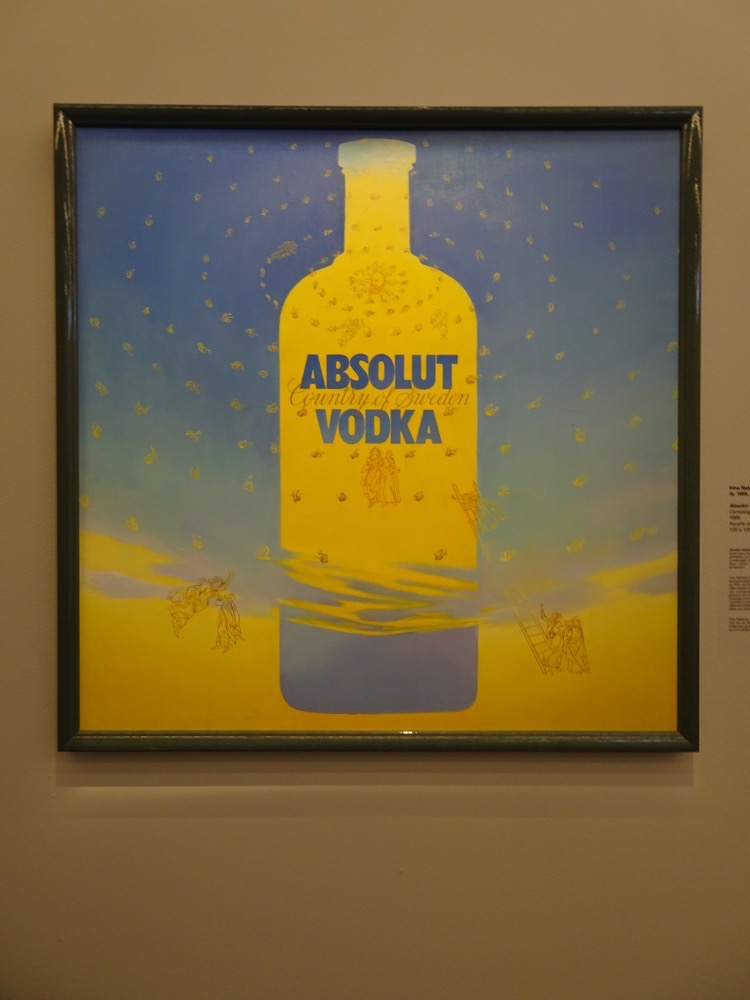
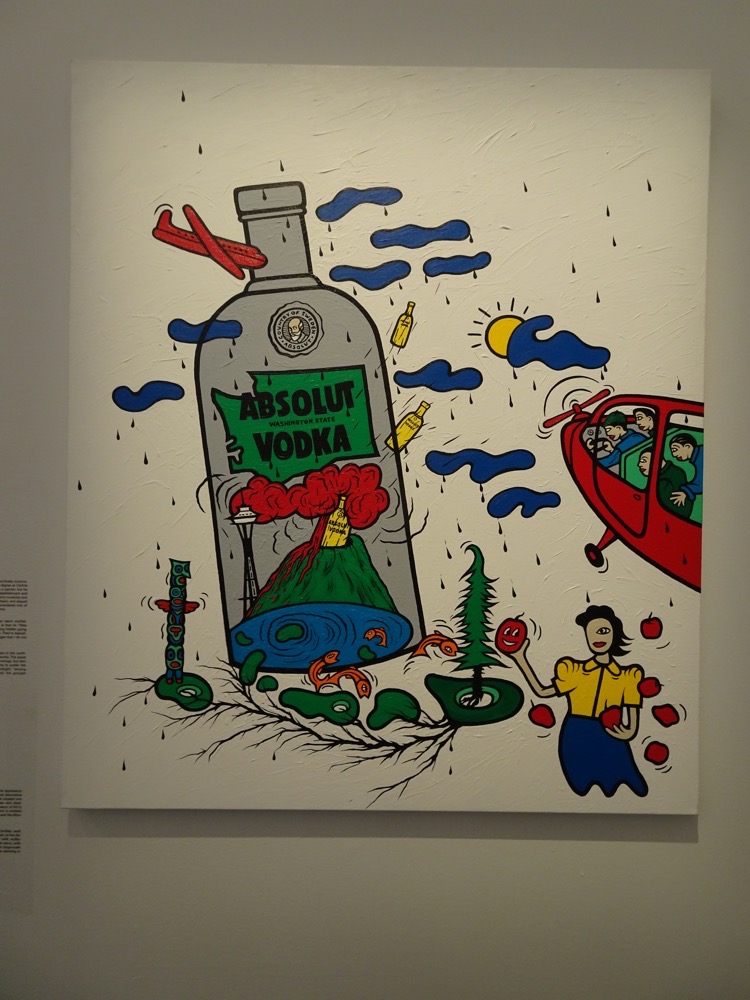
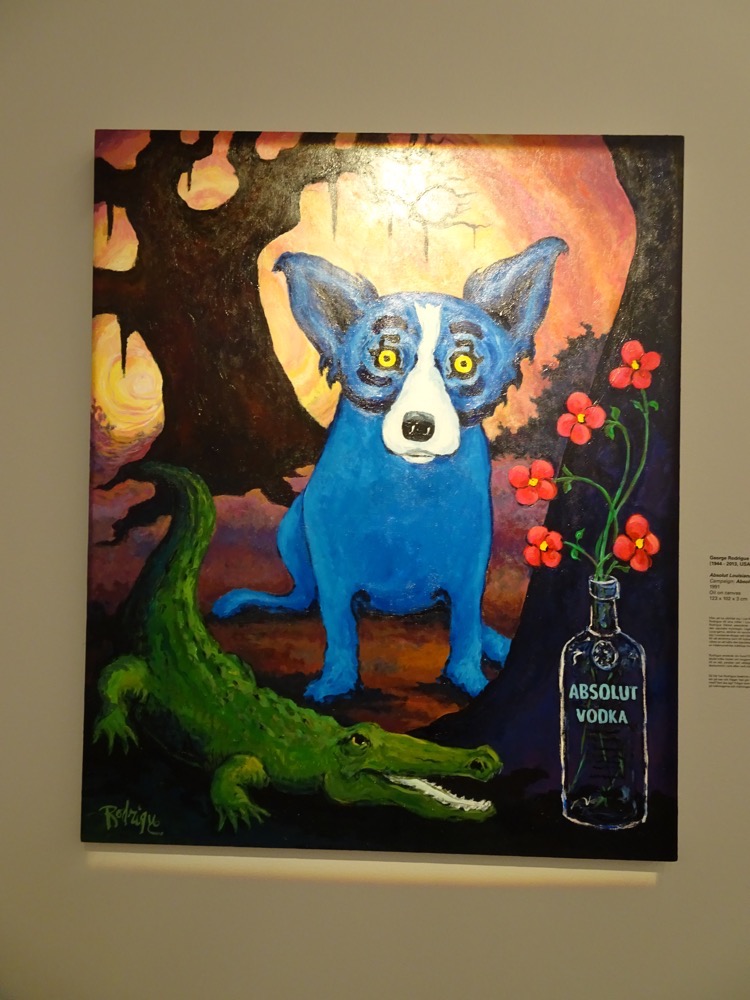
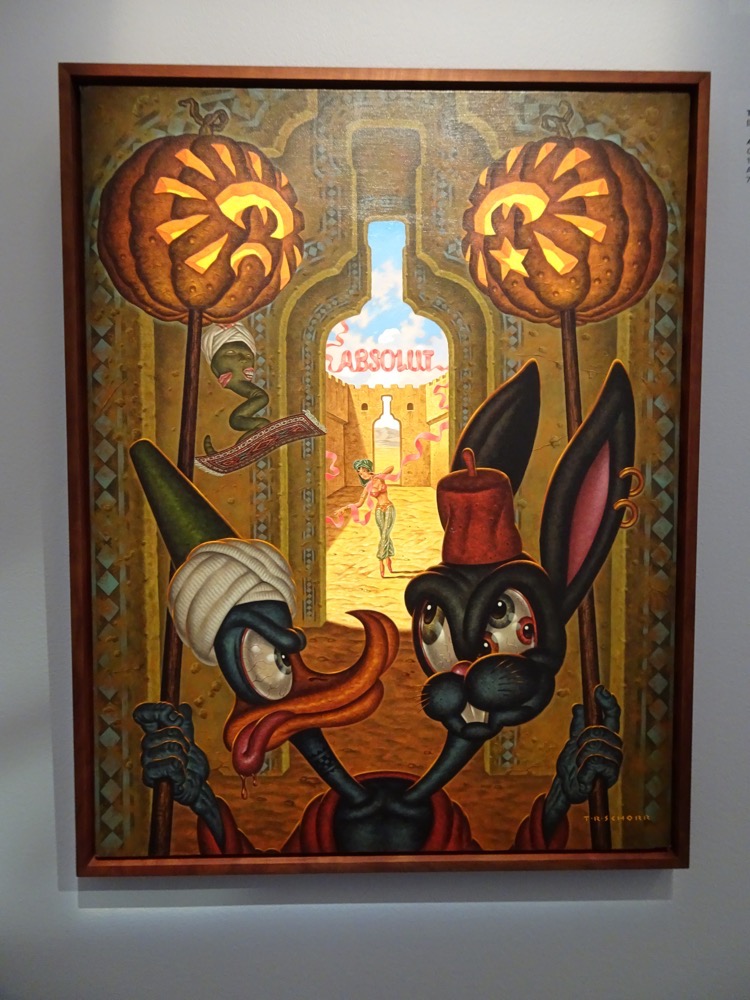
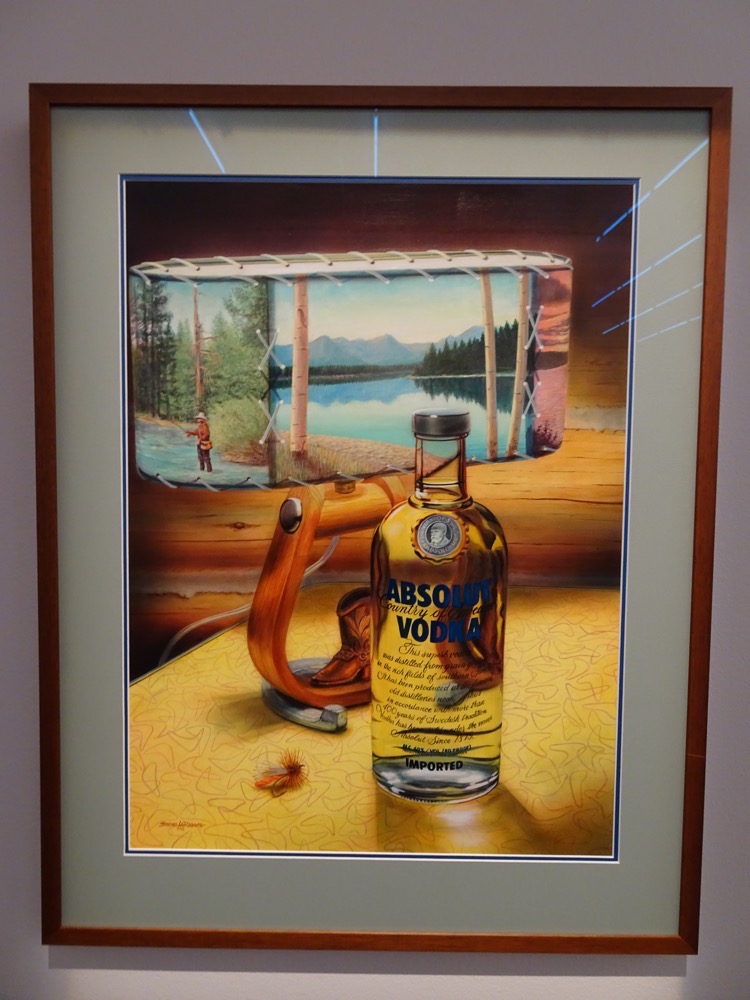
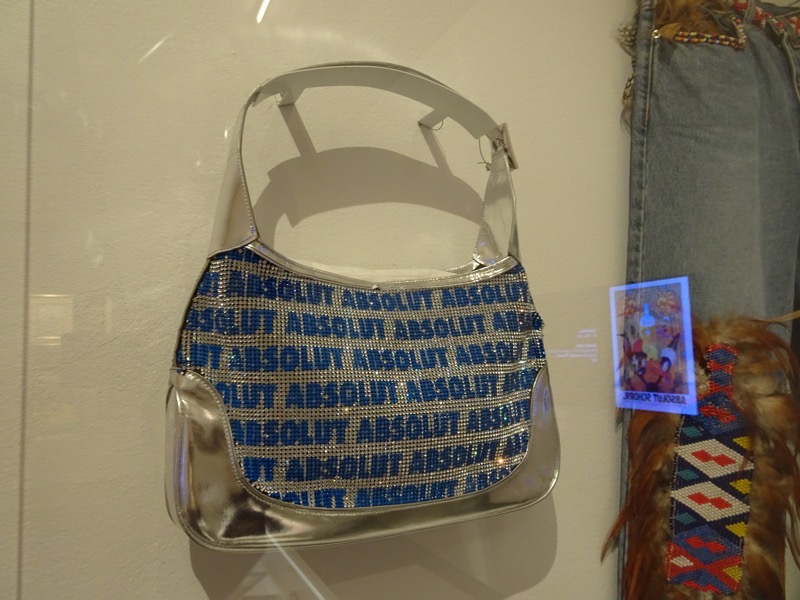
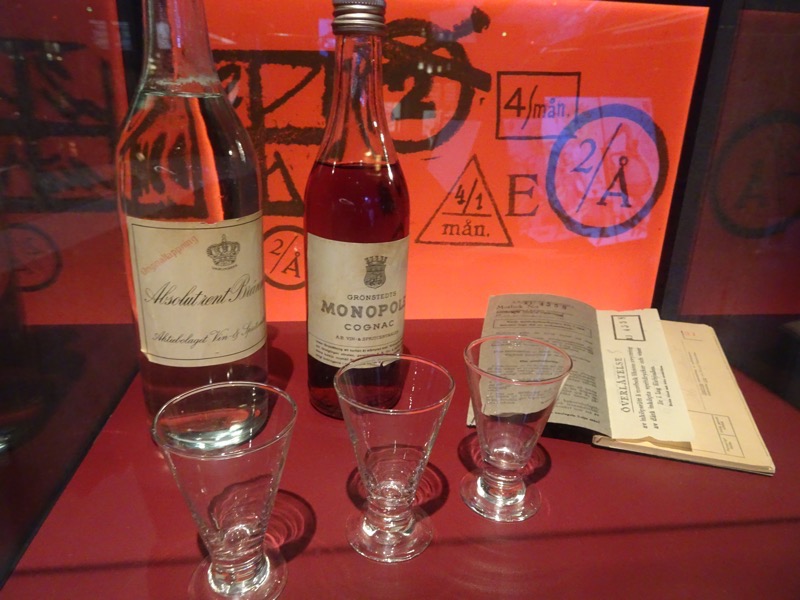
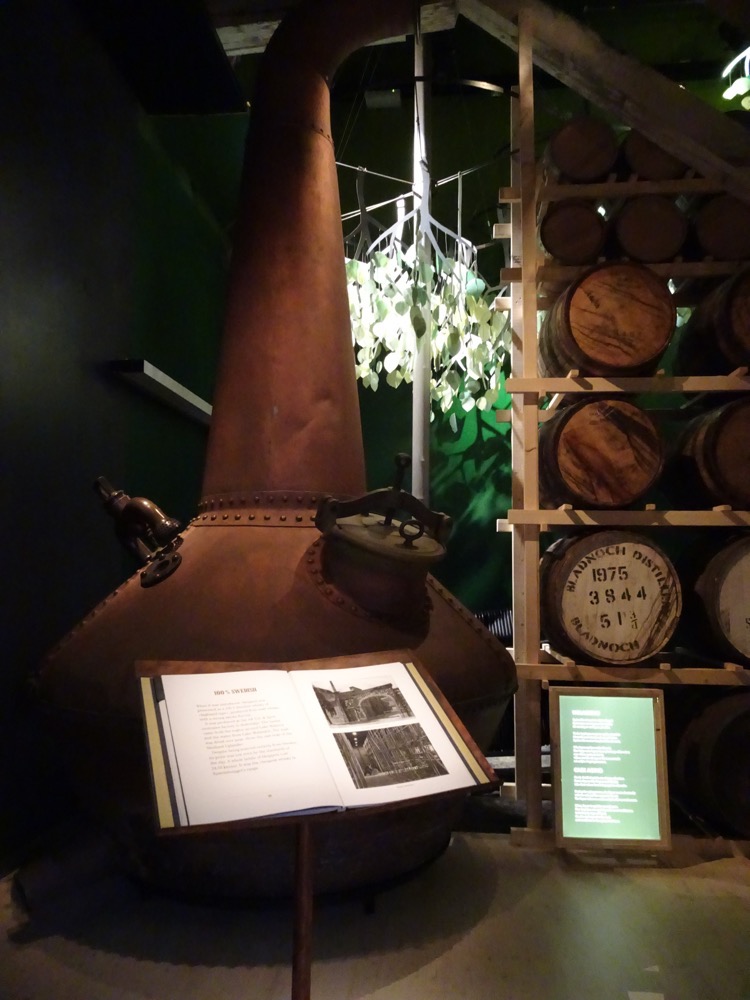
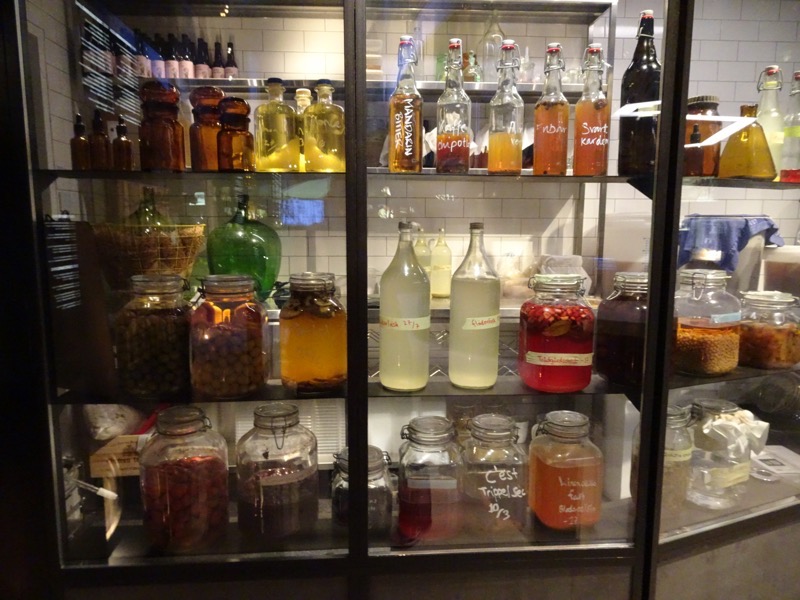
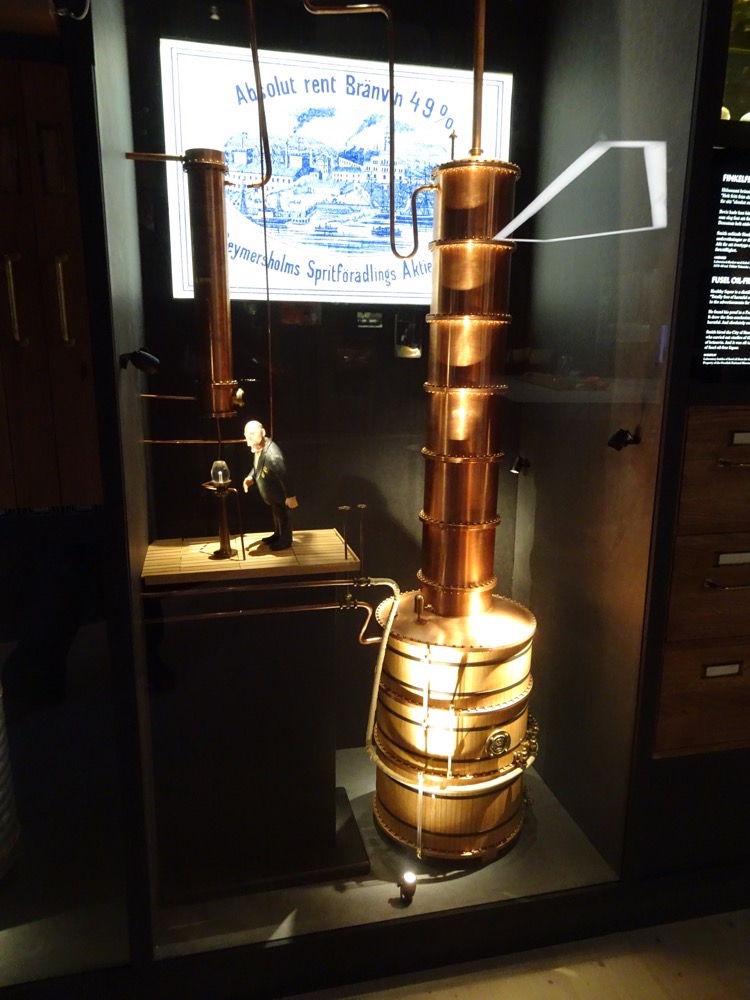
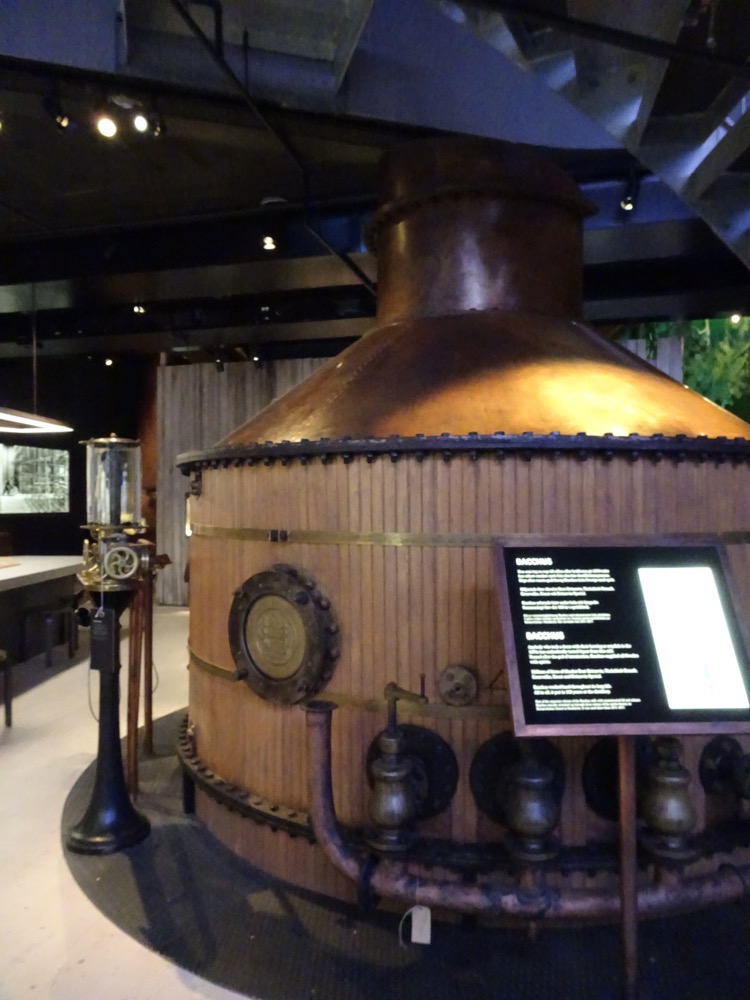
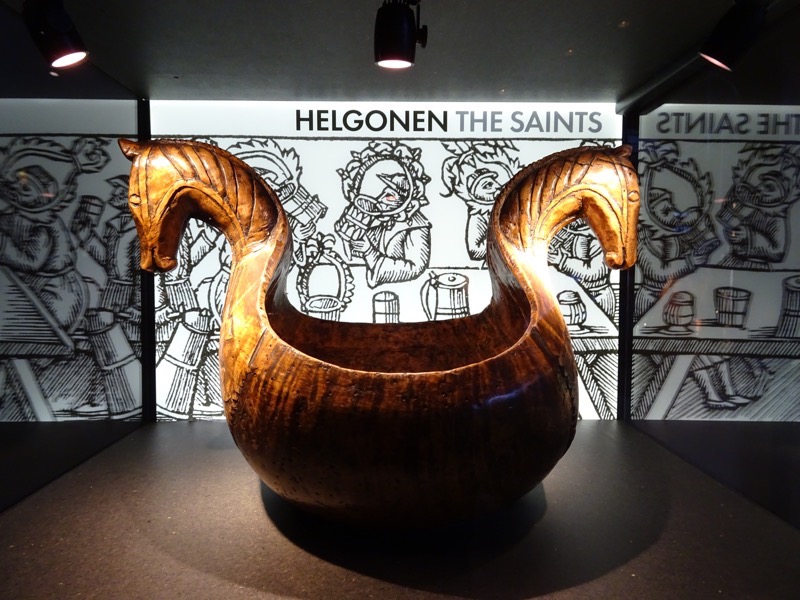
After a tasty beverage or two, I figured I had better keep moving and went to the nearby Skansen Museum, which was the world’s first open-air museum created in 1891. Here you can stroll through an enormous complex covering five centuries of Swedish history. It has a real sense of the past around you in the historical buildings, people in period garb and many living history exhibits.
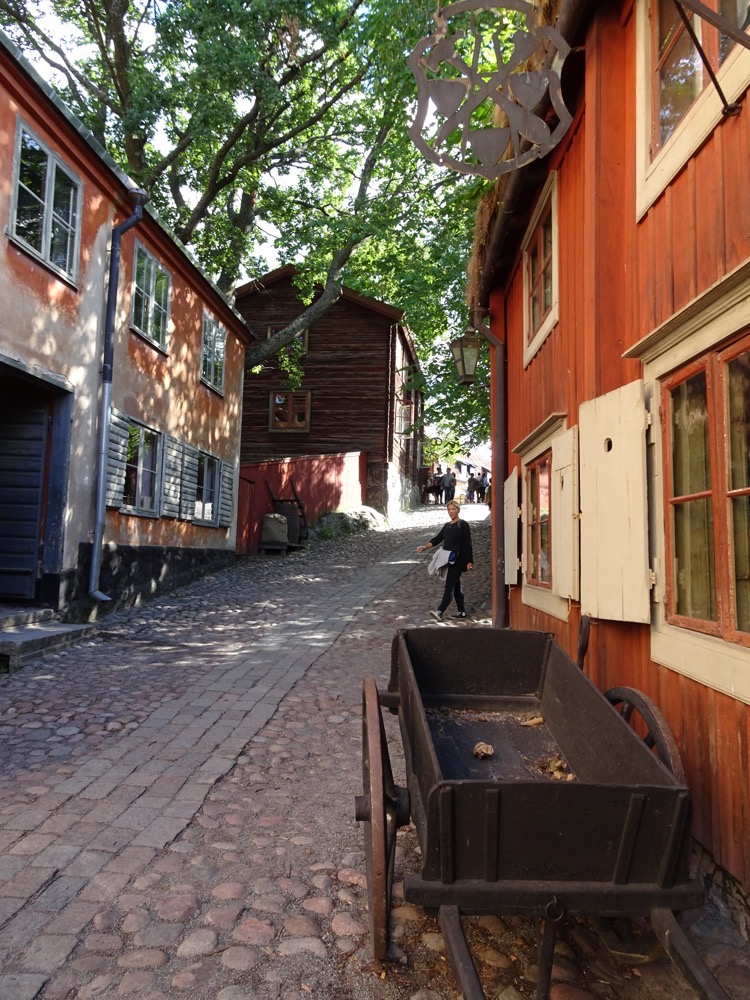 There are over 150 buildings from all over Sweden that have been dismantled and reassembled in the area. There is also a Zoo containing bears, wolves, and lynx and a kid’s petting zoo as well. The most interesting area (to me) was the town quarter which has a bakery, a furniture workshop, a pottery workshop, a glass blowing facility, pubs and restaurants and many other places of general industry.
There are over 150 buildings from all over Sweden that have been dismantled and reassembled in the area. There is also a Zoo containing bears, wolves, and lynx and a kid’s petting zoo as well. The most interesting area (to me) was the town quarter which has a bakery, a furniture workshop, a pottery workshop, a glass blowing facility, pubs and restaurants and many other places of general industry.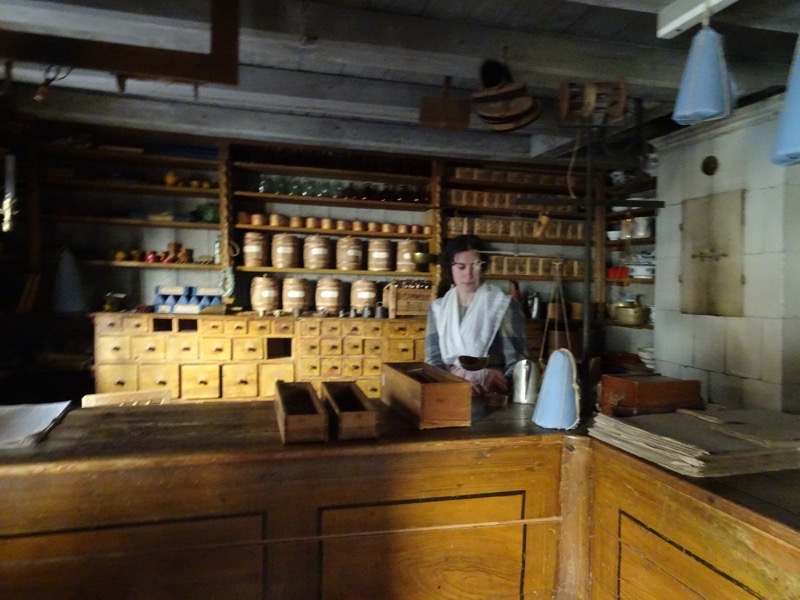
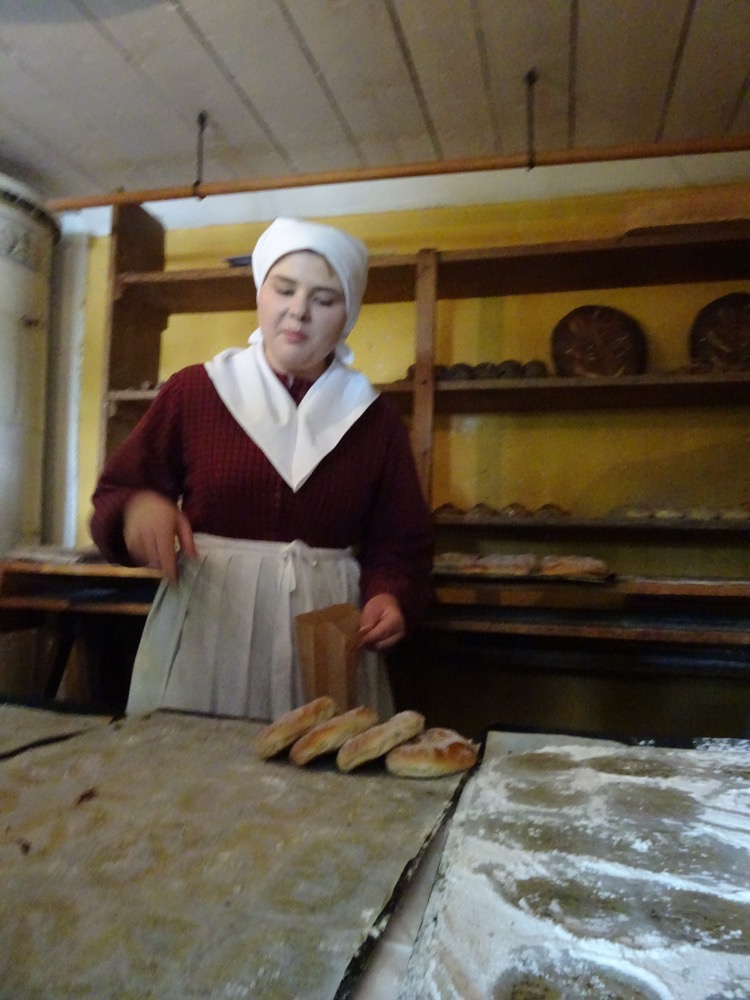 The bakers selling delicious period buns – vanilla bun also tasted strangely of cardamom. Interesting but it worked.
The bakers selling delicious period buns – vanilla bun also tasted strangely of cardamom. Interesting but it worked.
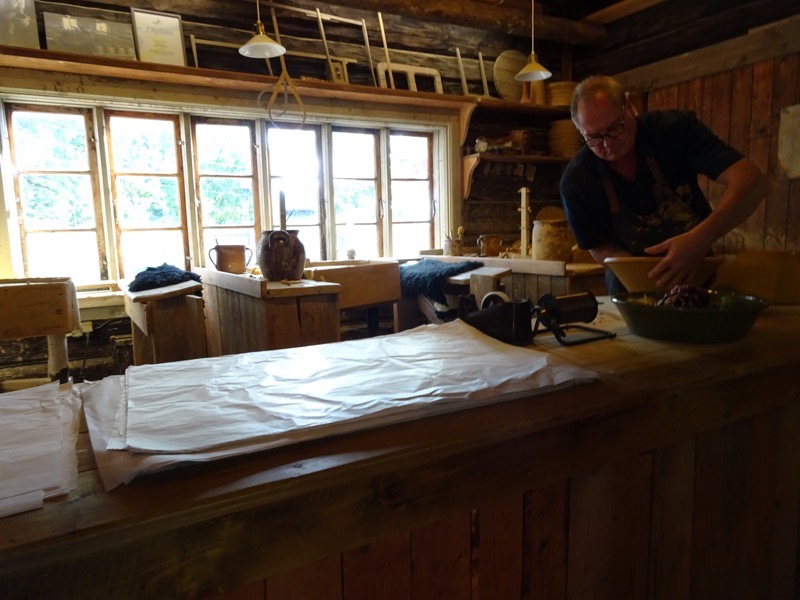
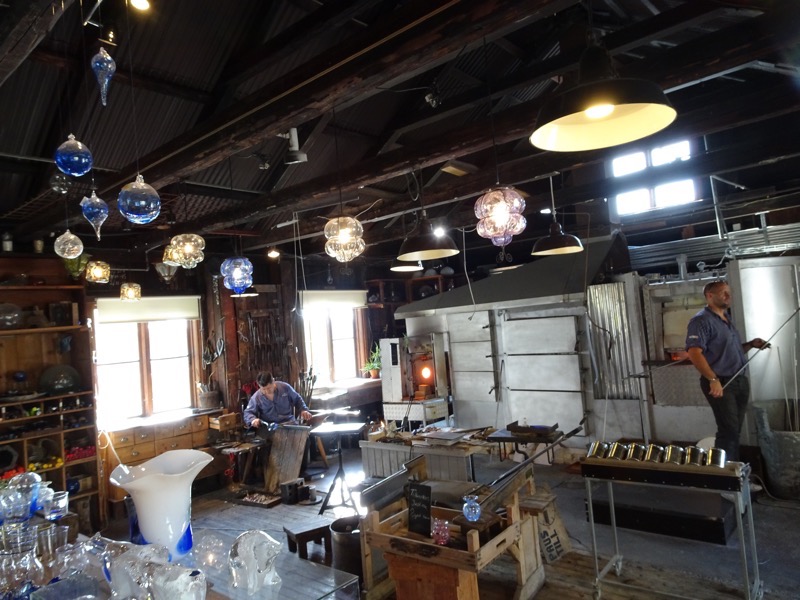 Glass blowing working and moulds for glasswork.
Glass blowing working and moulds for glasswork.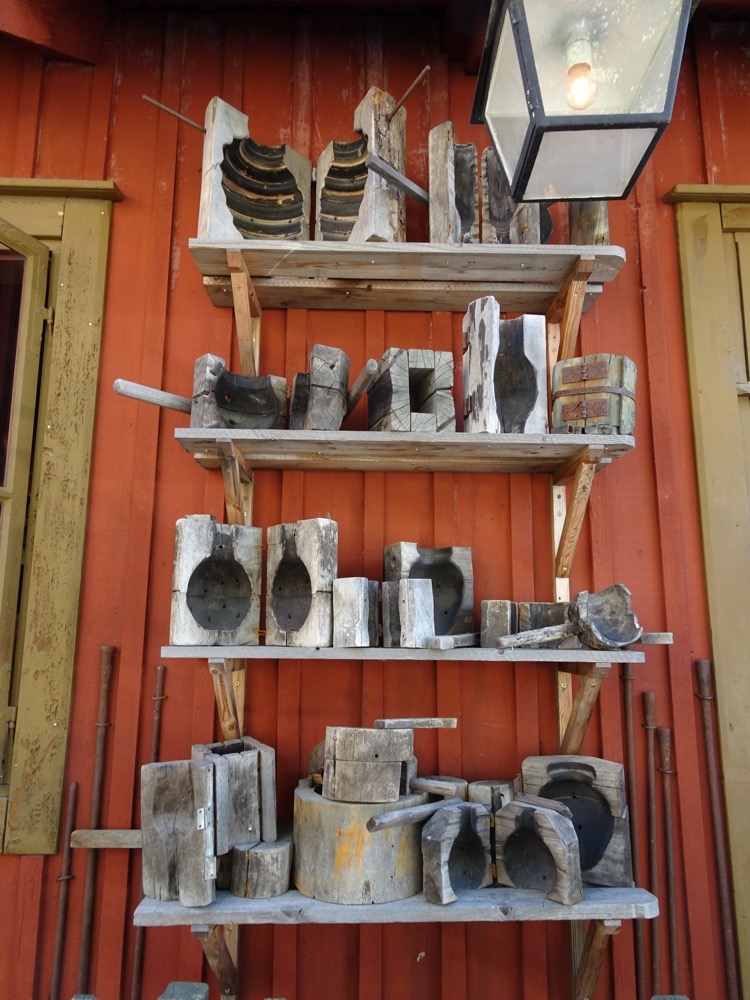 All of which is on sale of course, though I am unsure how ‘period’ little pink elephants are…
All of which is on sale of course, though I am unsure how ‘period’ little pink elephants are…
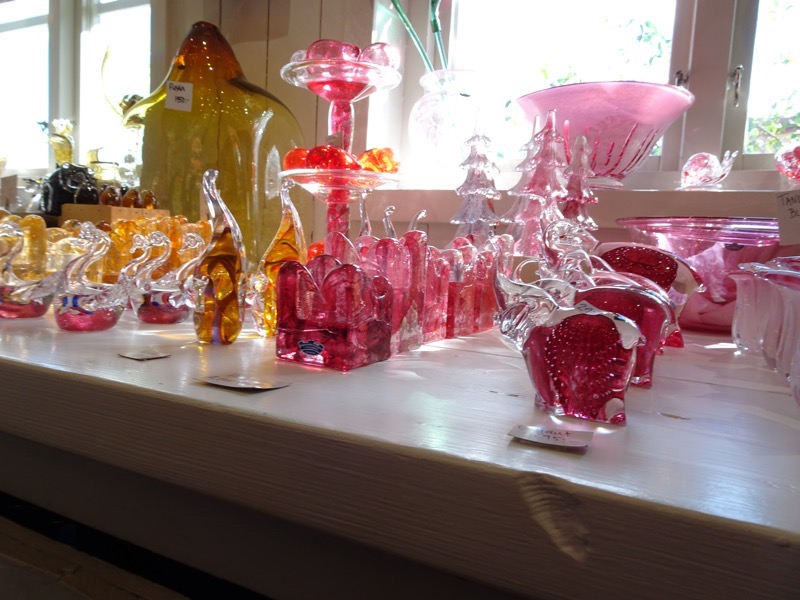
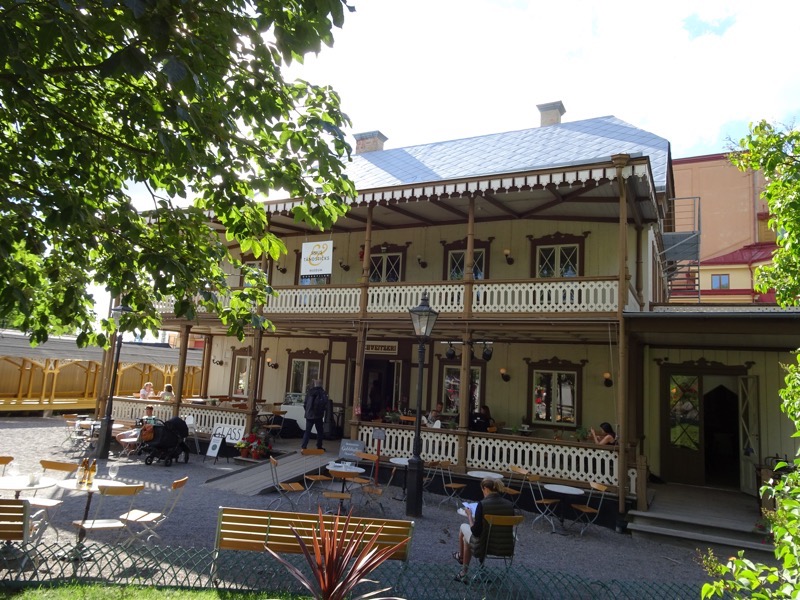
Gubbyhllan was original a summer residence log house built in 1816. It was formerly in Hasselbacken just outside of Skansen, but was relocated to the museum in 1963. It is currently being used as a beautiful little cafe.
Sideshow alley and fun fair.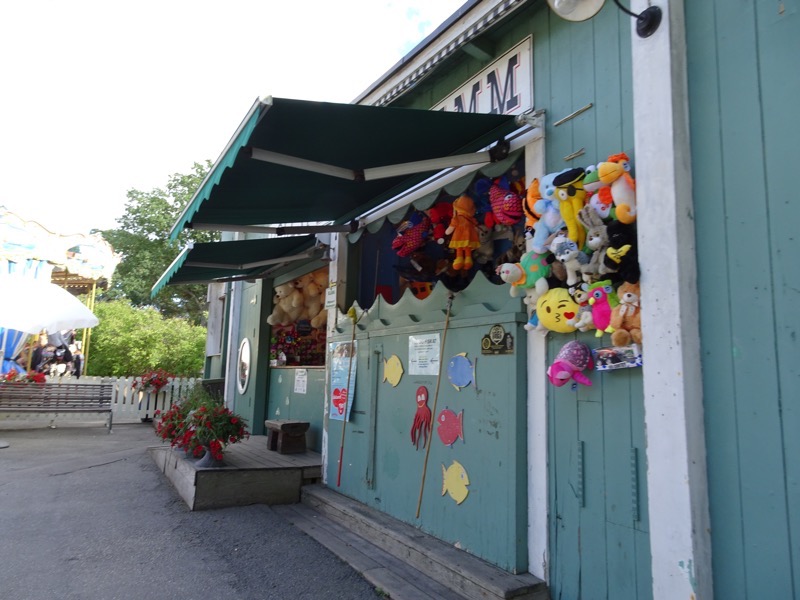
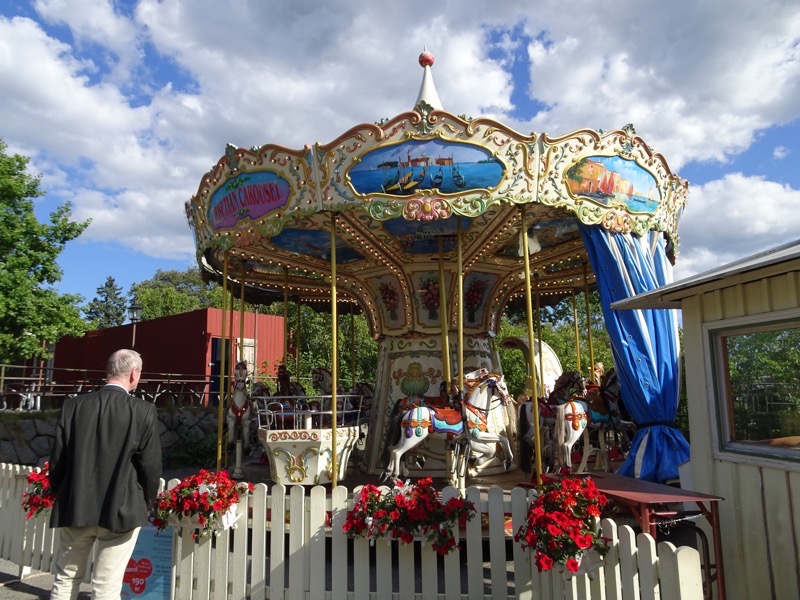 Skansen tower
Skansen tower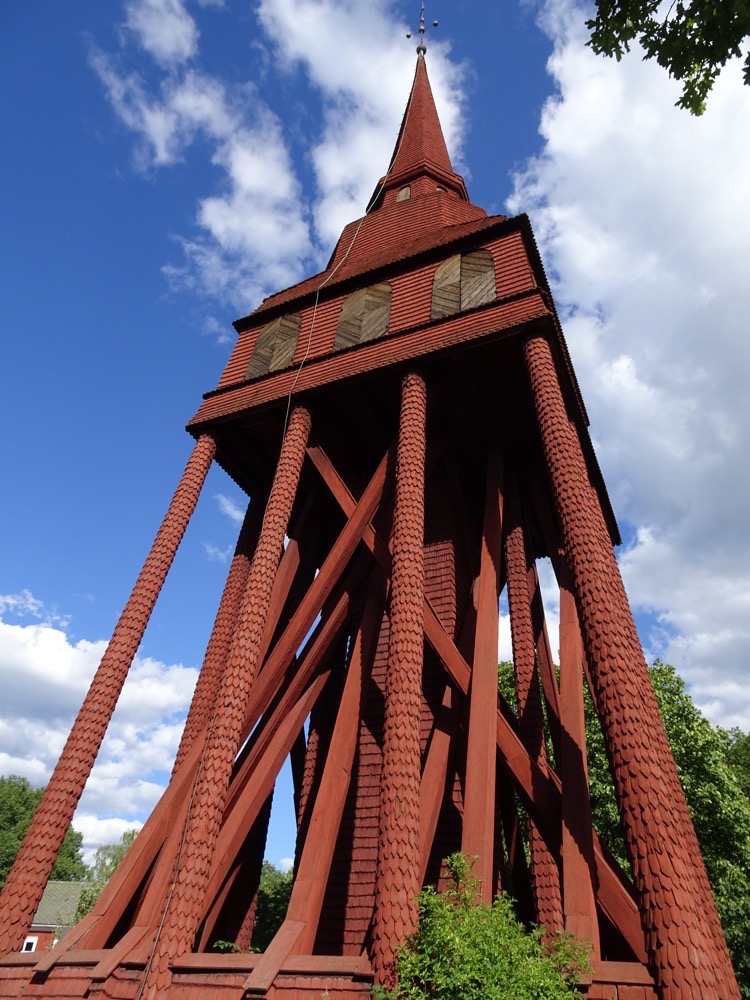 Some traditional grass and thatched roofed farming cottages.
Some traditional grass and thatched roofed farming cottages.
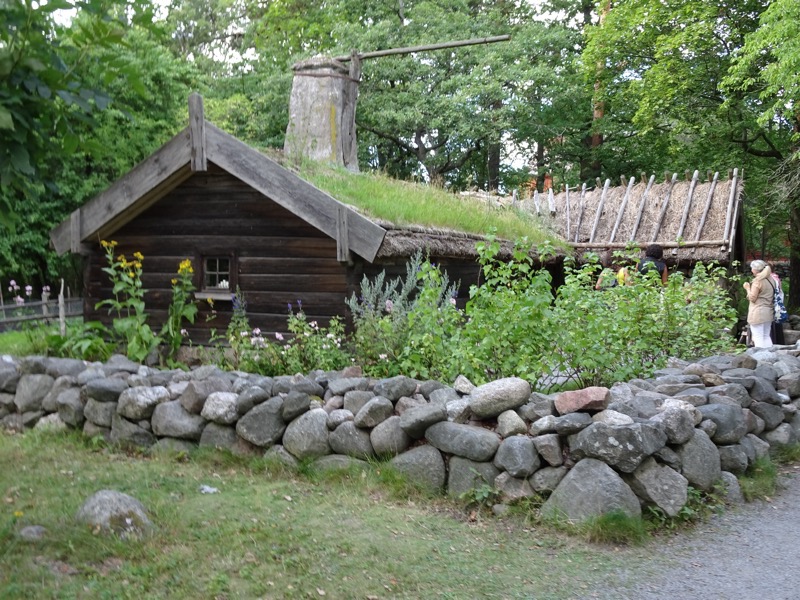
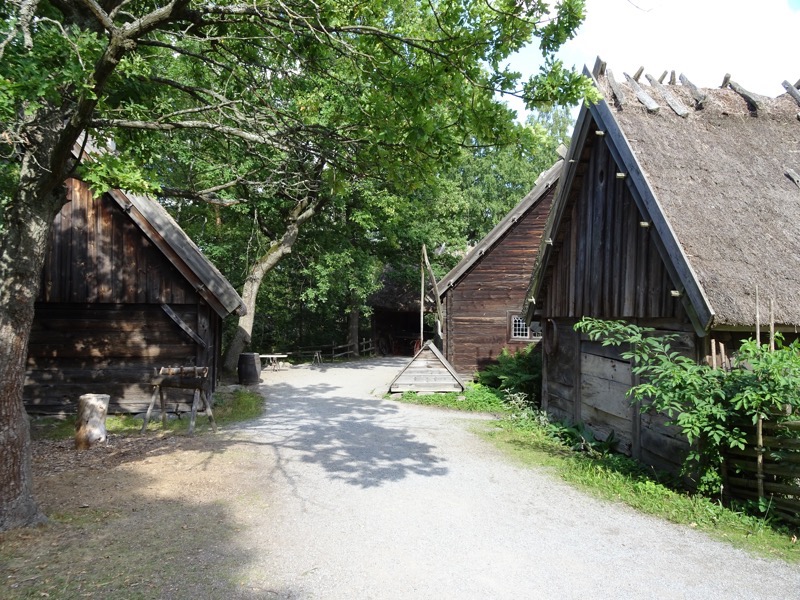
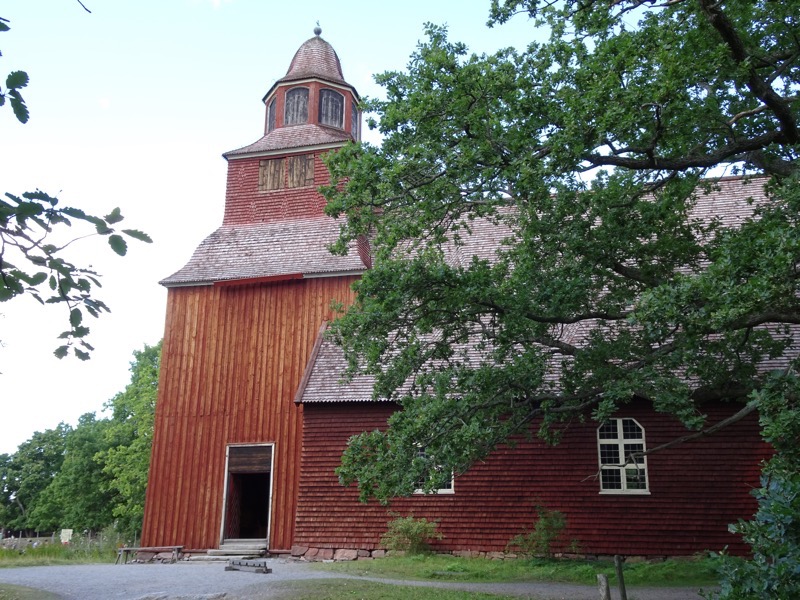 This is the Seglora church from the Seglora Parish and built in 1730 official church, opened in 1730. The church is still an active ecumenical church with regular worship services and it is one of Sweden’s most popular wedding churches apparently. Not hard to see why, it is very picturesque.
This is the Seglora church from the Seglora Parish and built in 1730 official church, opened in 1730. The church is still an active ecumenical church with regular worship services and it is one of Sweden’s most popular wedding churches apparently. Not hard to see why, it is very picturesque.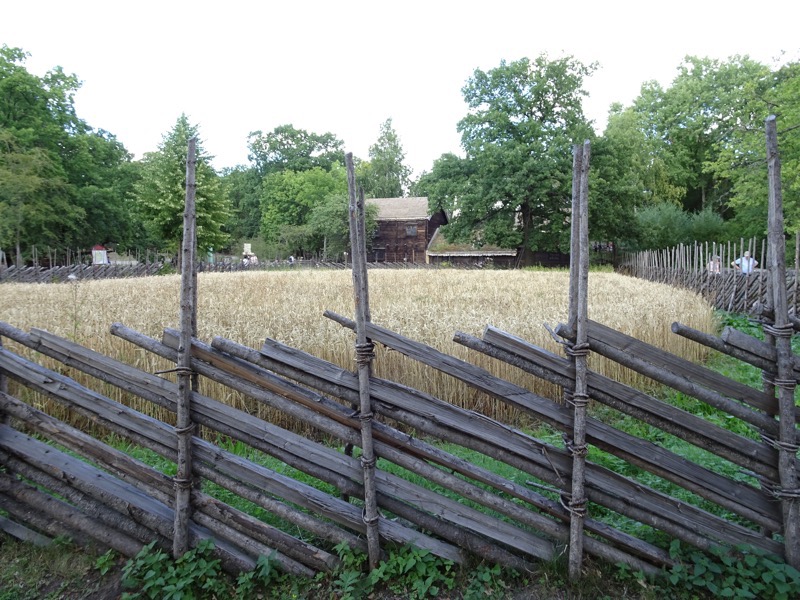
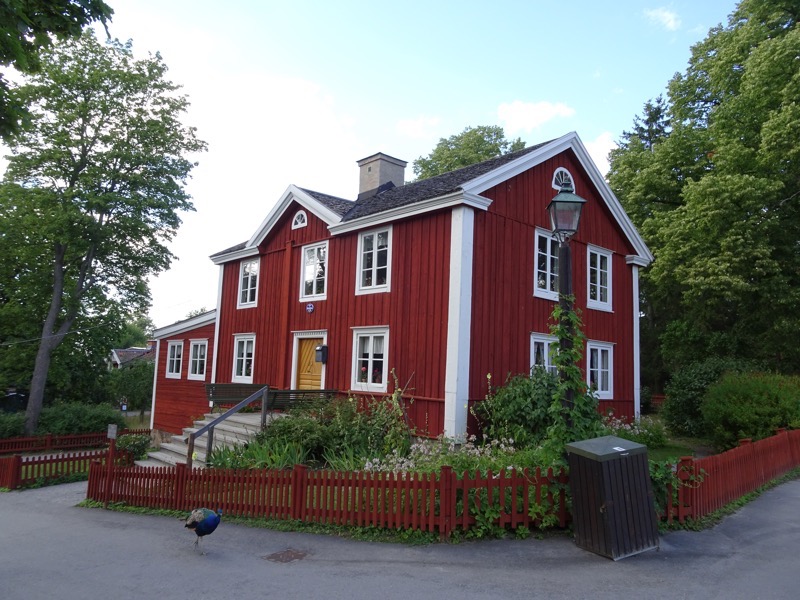 Ekshäradsgården is a farmhouse dating from the 1820s, which was in Norra Skoga, Ekshärads, and was moved to Skansen 1952-1953,
Ekshäradsgården is a farmhouse dating from the 1820s, which was in Norra Skoga, Ekshärads, and was moved to Skansen 1952-1953,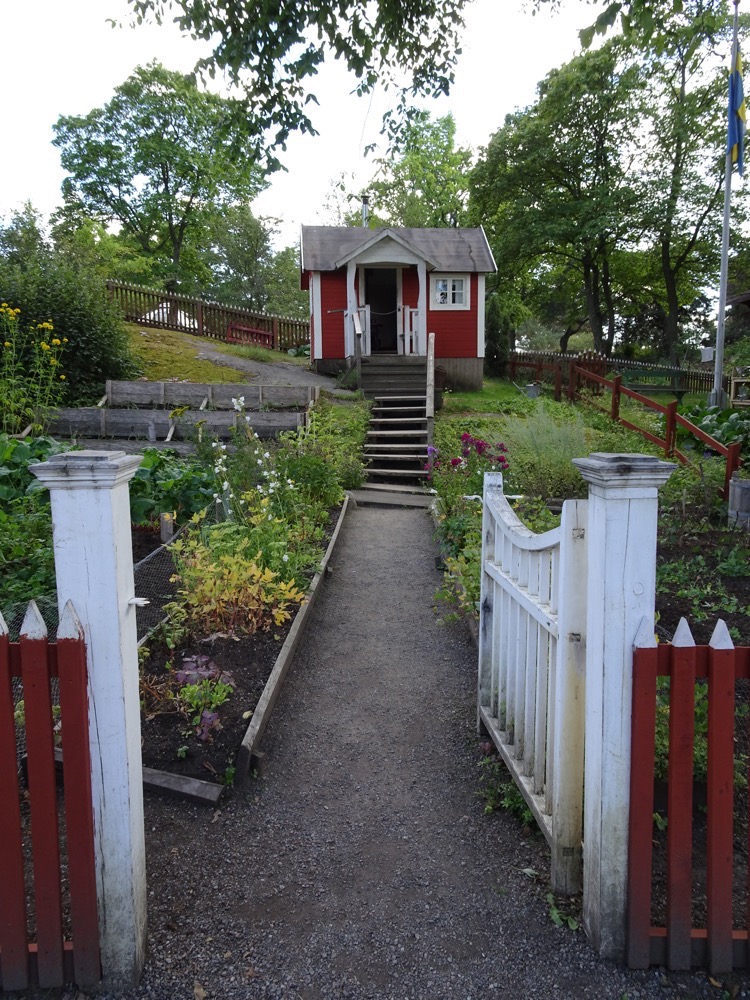 An Allotment House – tiny house with large self-sustaining kitchen gardens. There are rows of them in the village.
An Allotment House – tiny house with large self-sustaining kitchen gardens. There are rows of them in the village.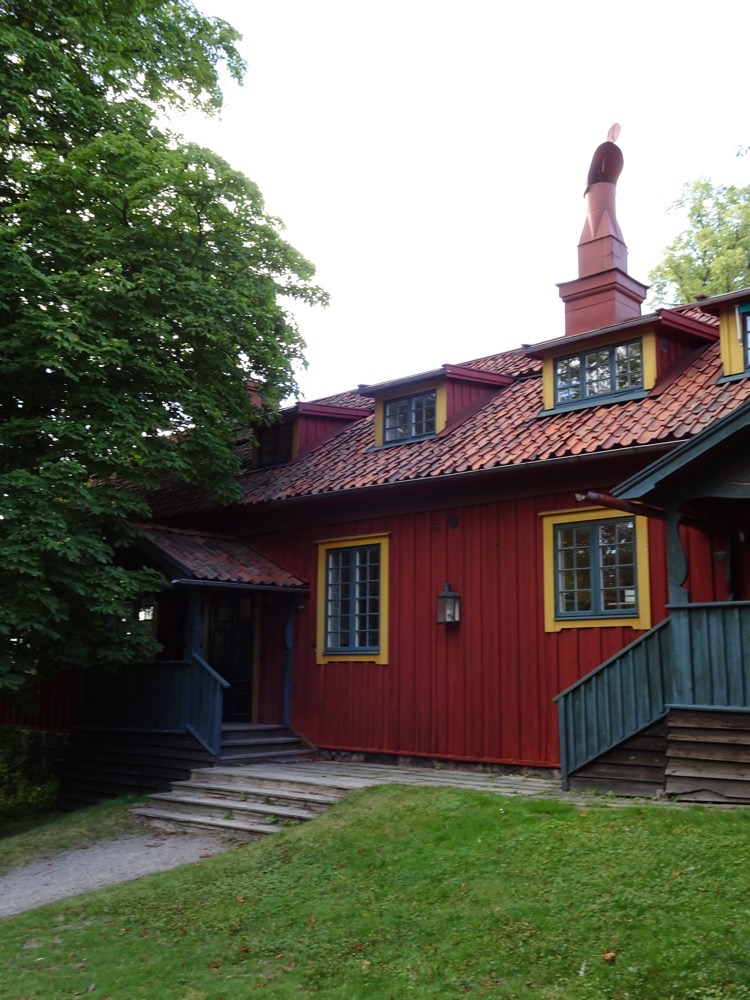
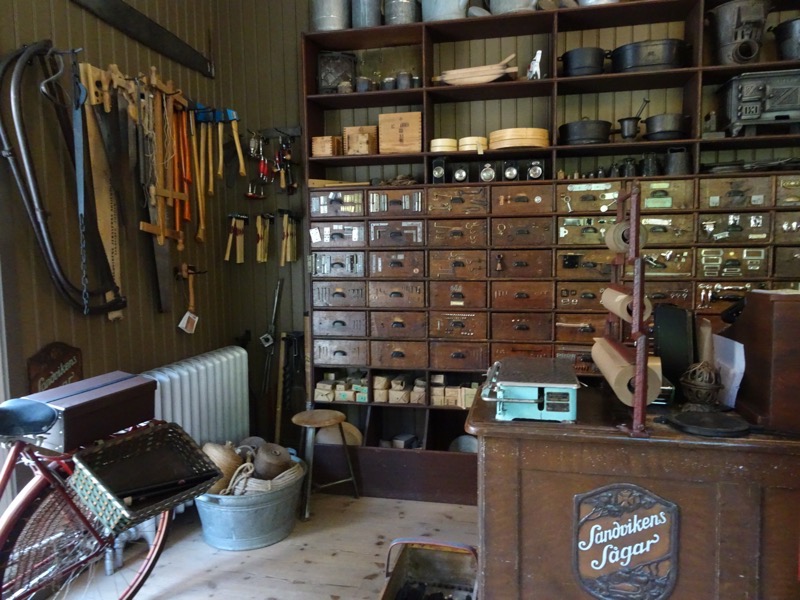
The Iron Traders house is located in the town quarter district and is a shop dating form the 1880s. It was moved an opened in 2006.
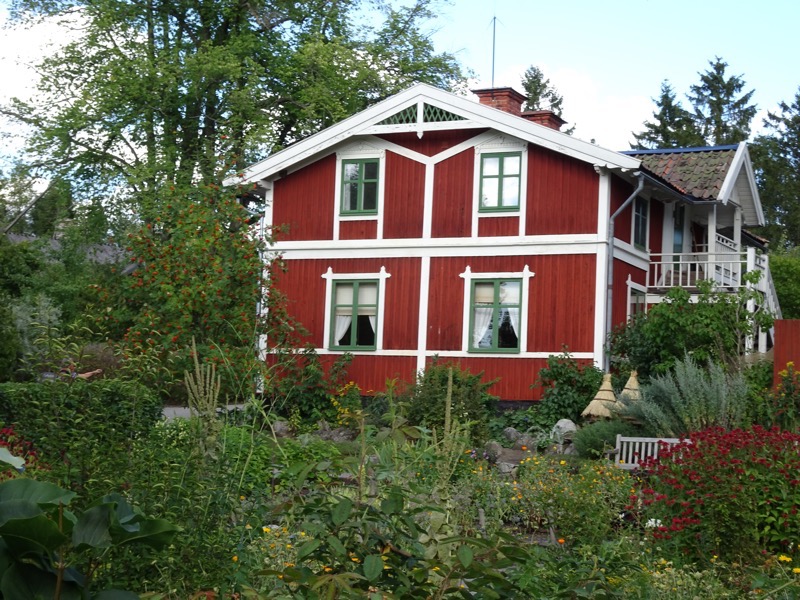
After visiting the Skansen museum it was off to brave the public transport to get to the centre of town and meet Mr K after his workshop. Stockholm is very beautiful and I am looking foward to exploring a little more tomorrow morning before heading to a work function at City Hall in the afternoon.